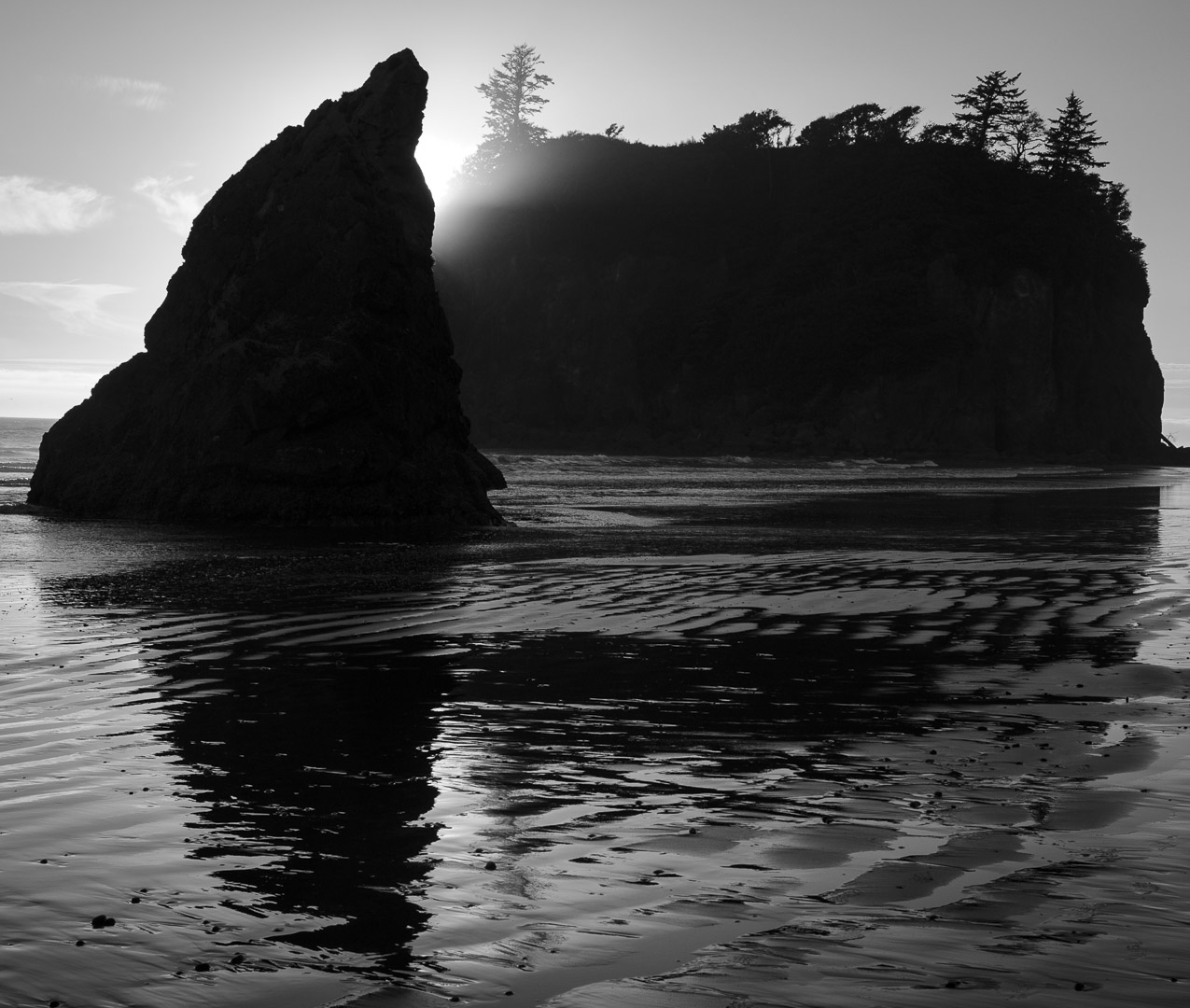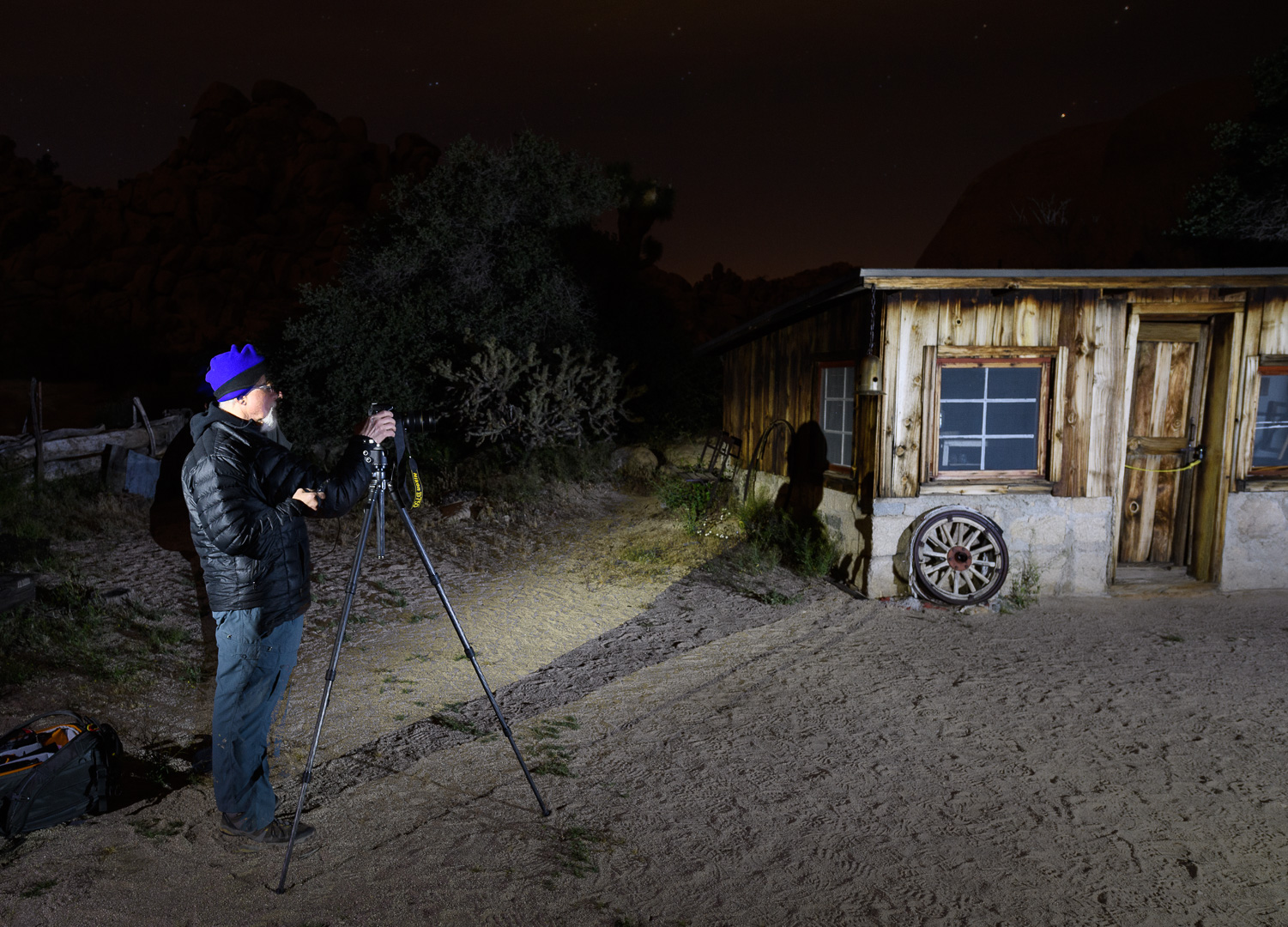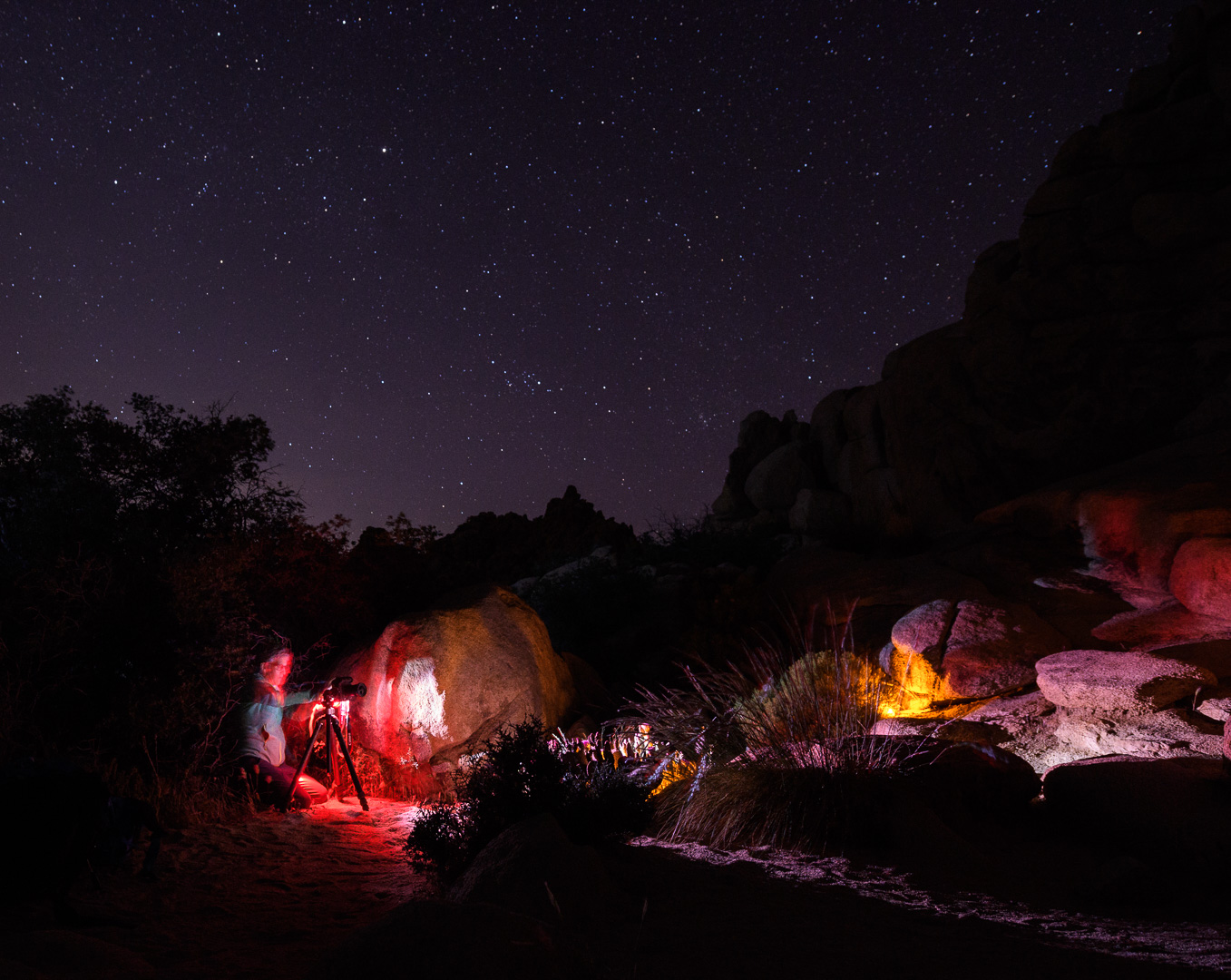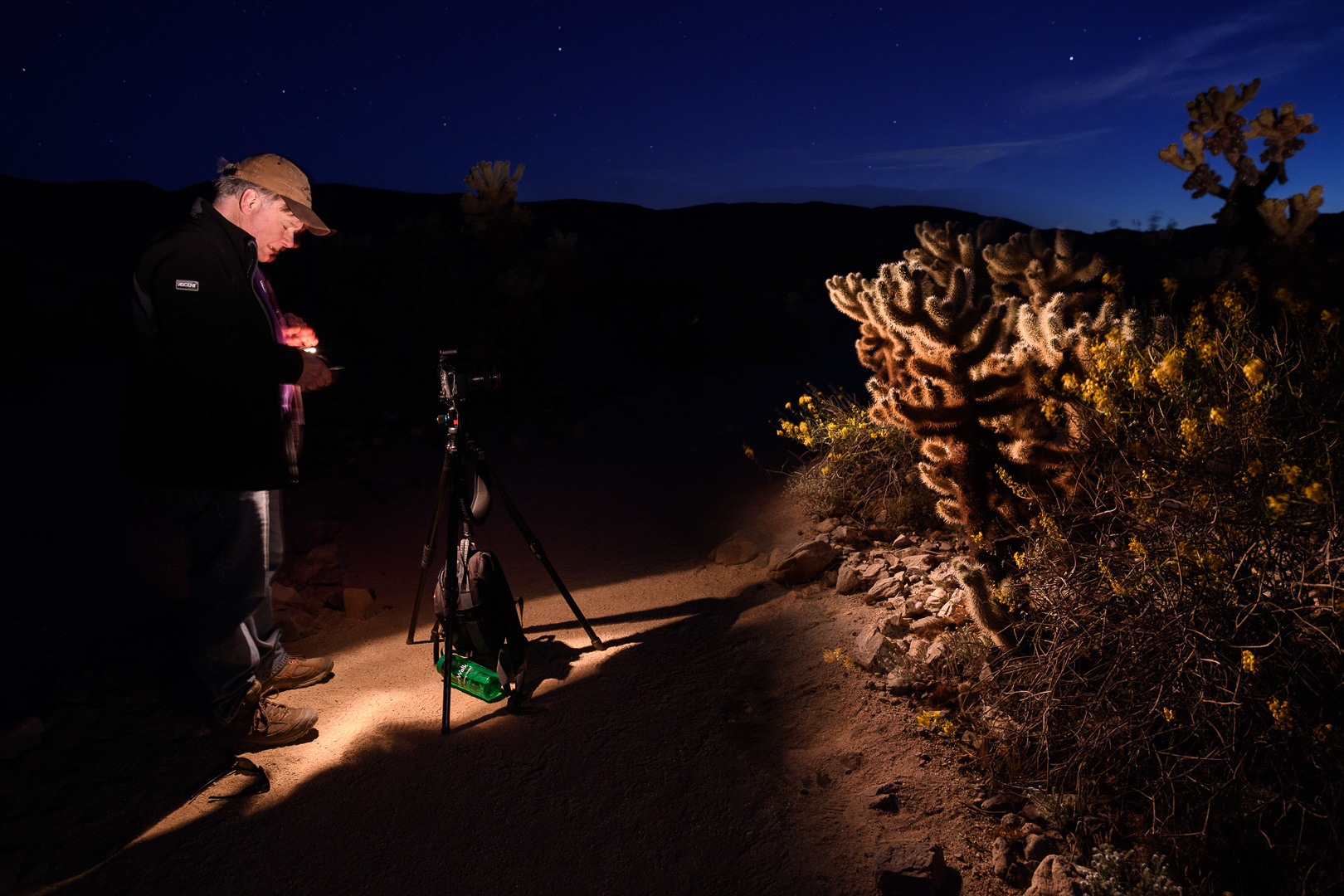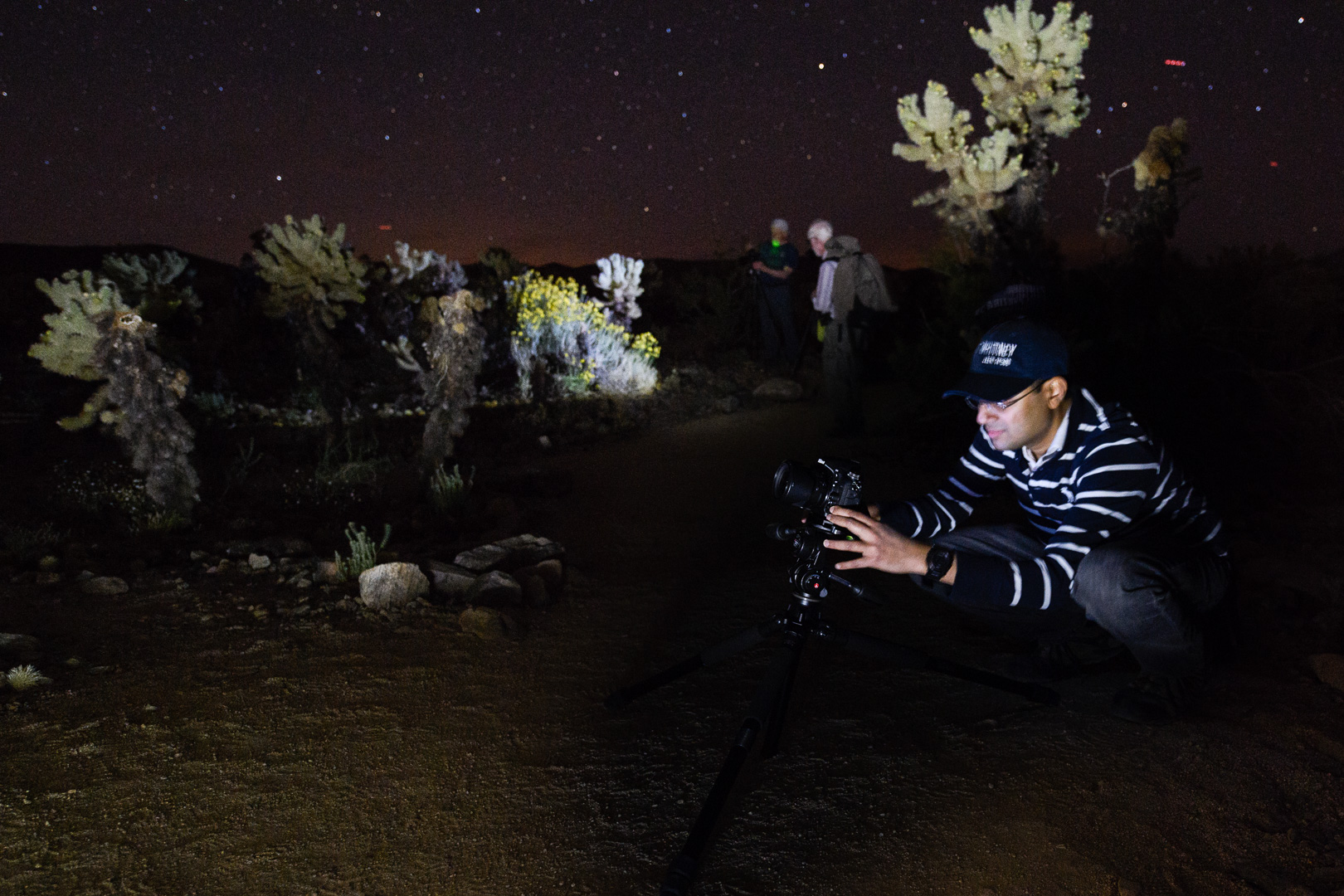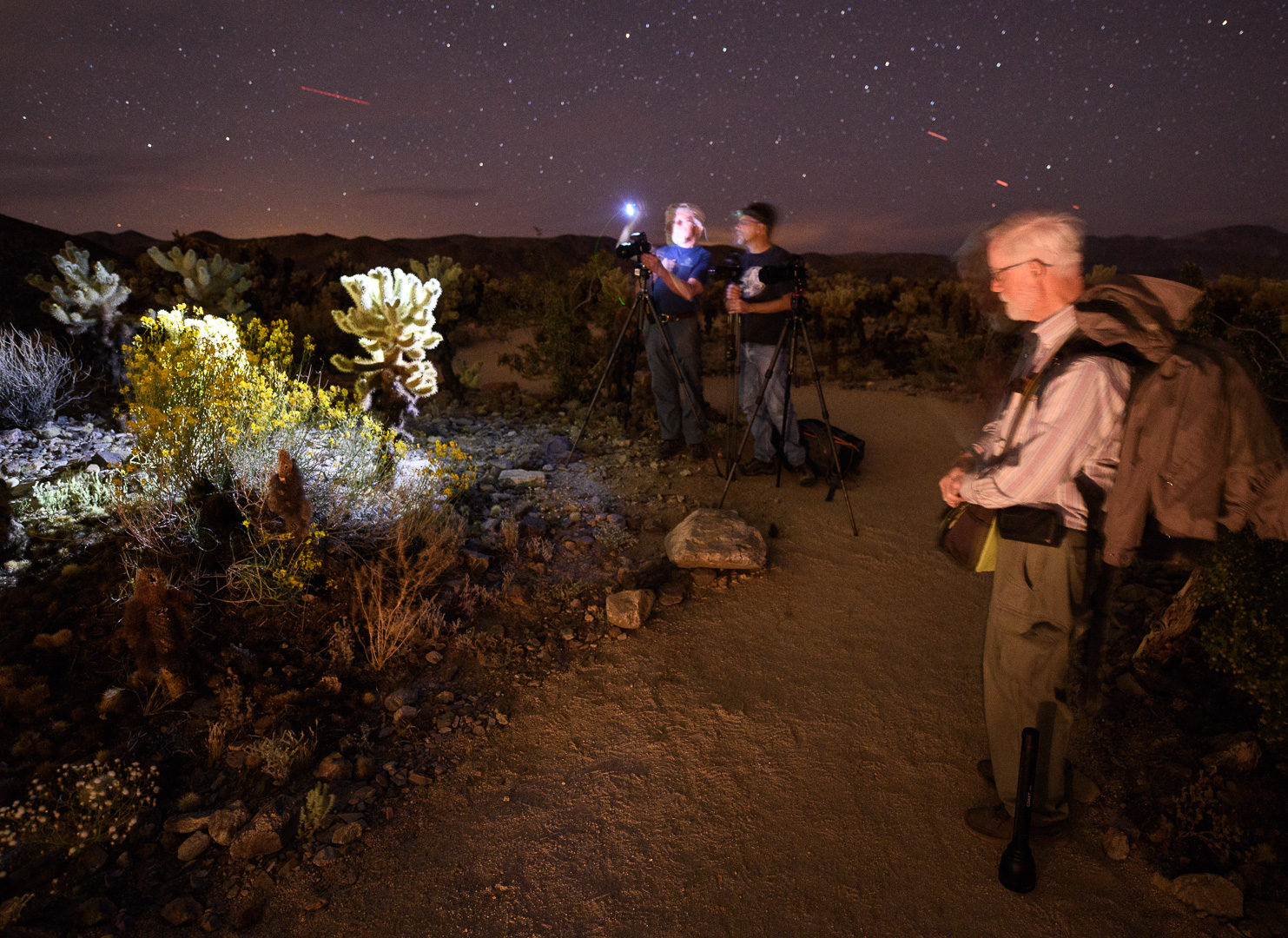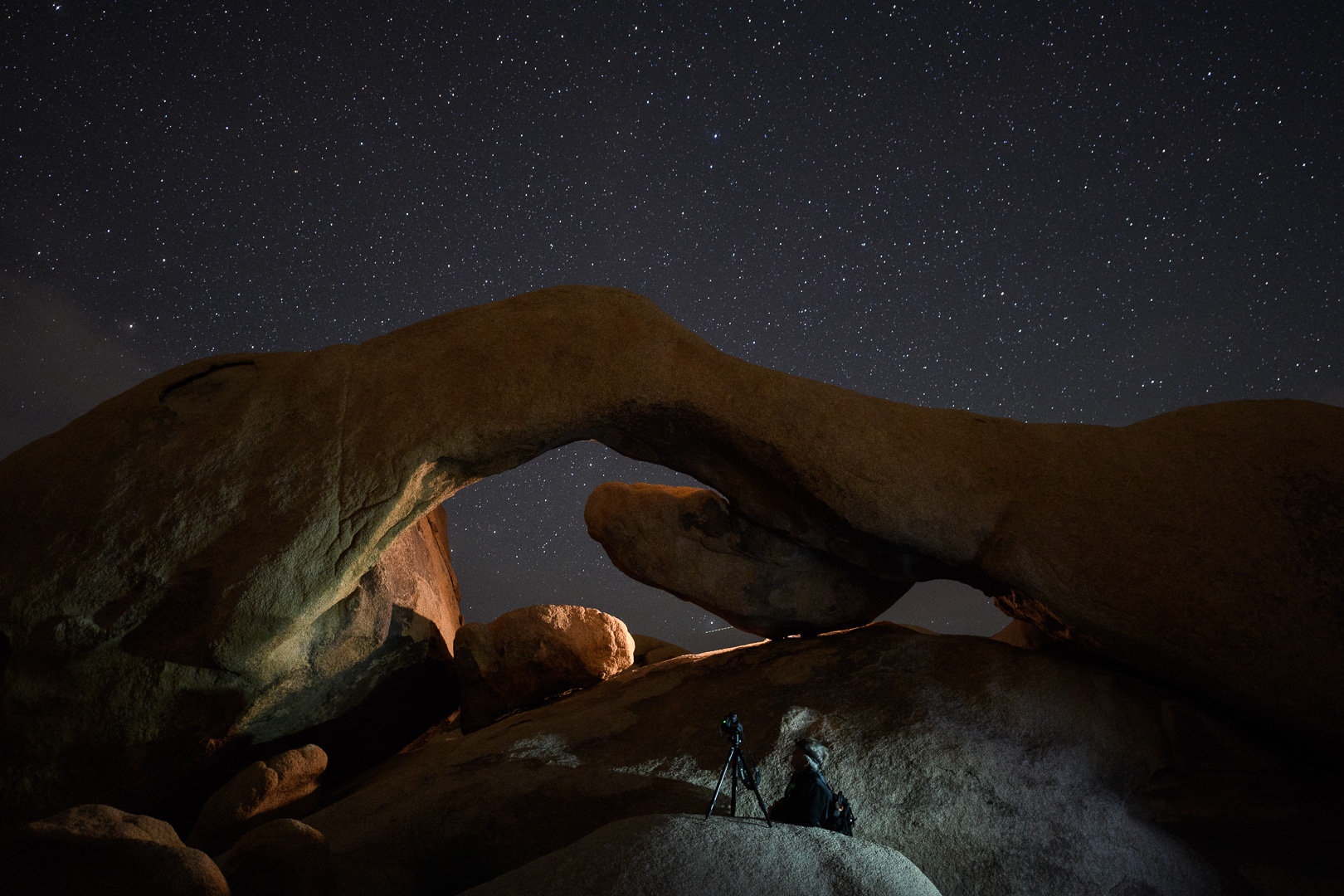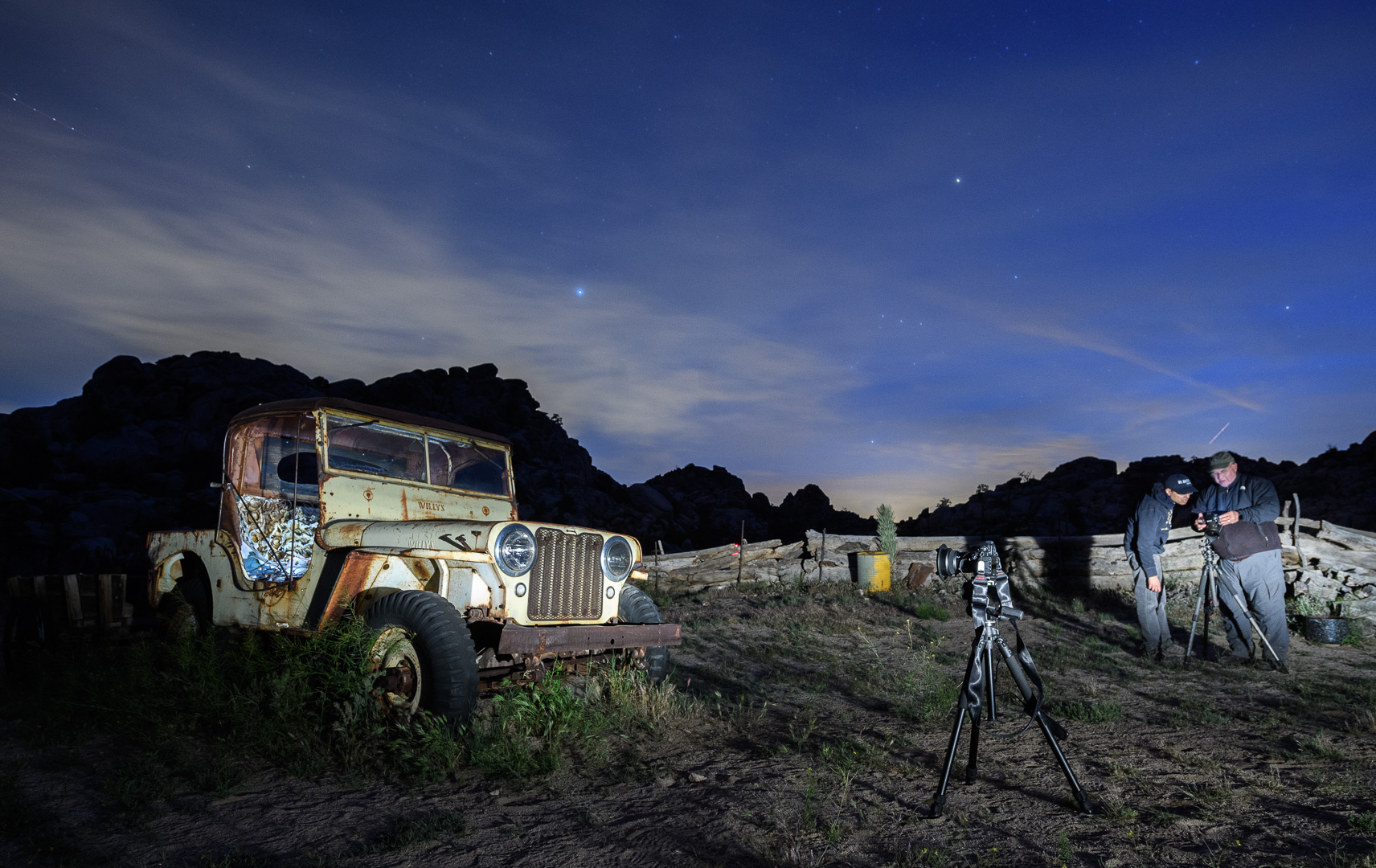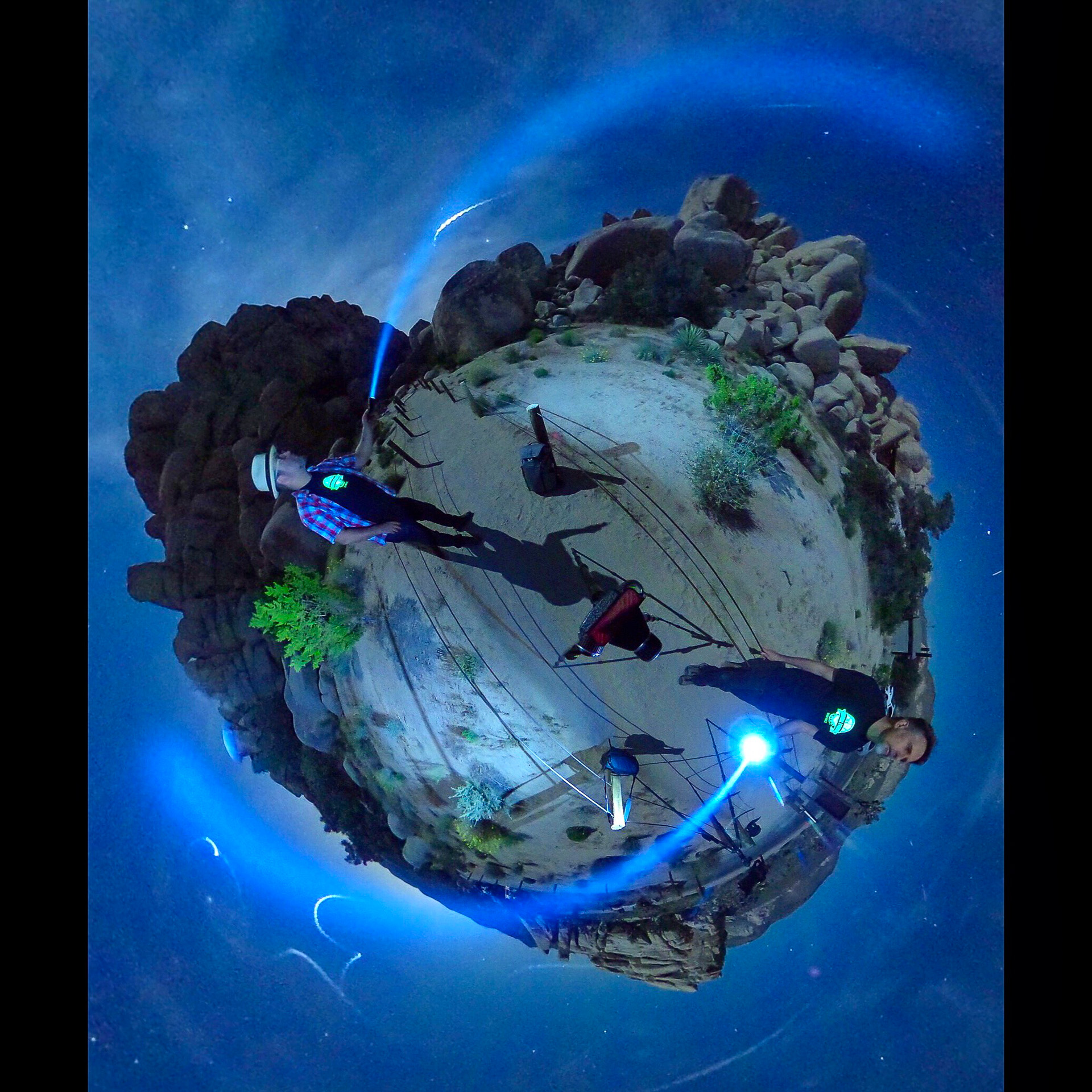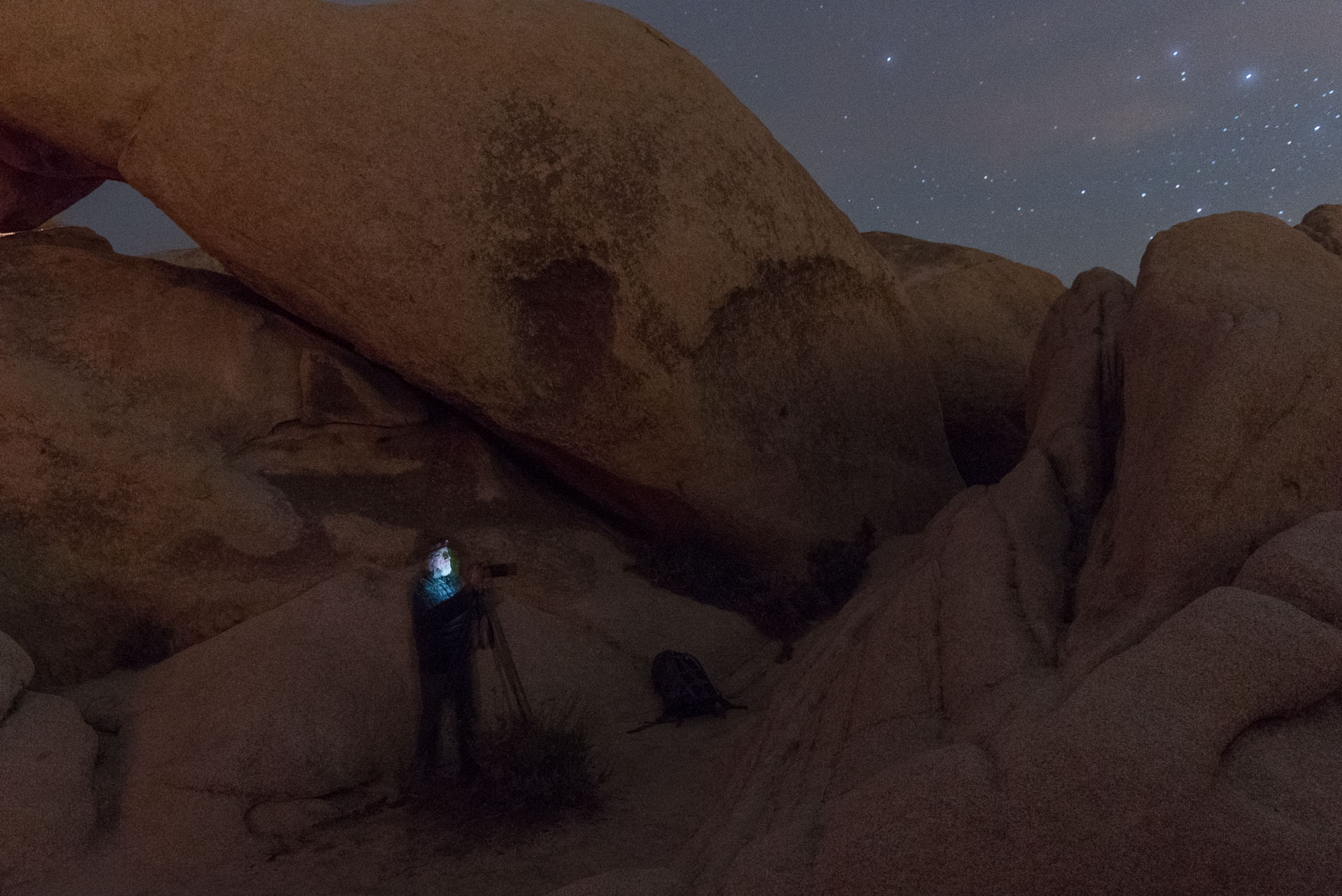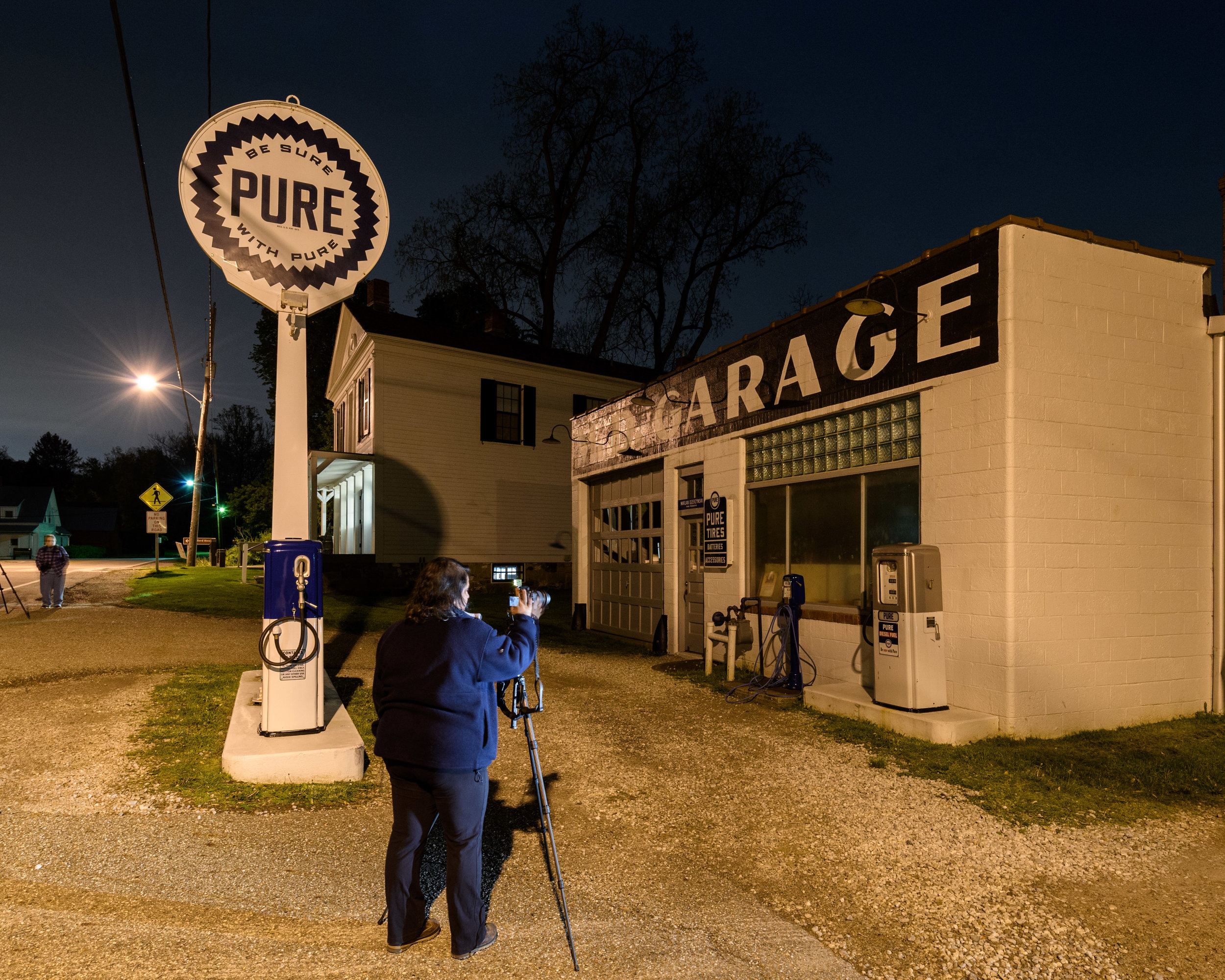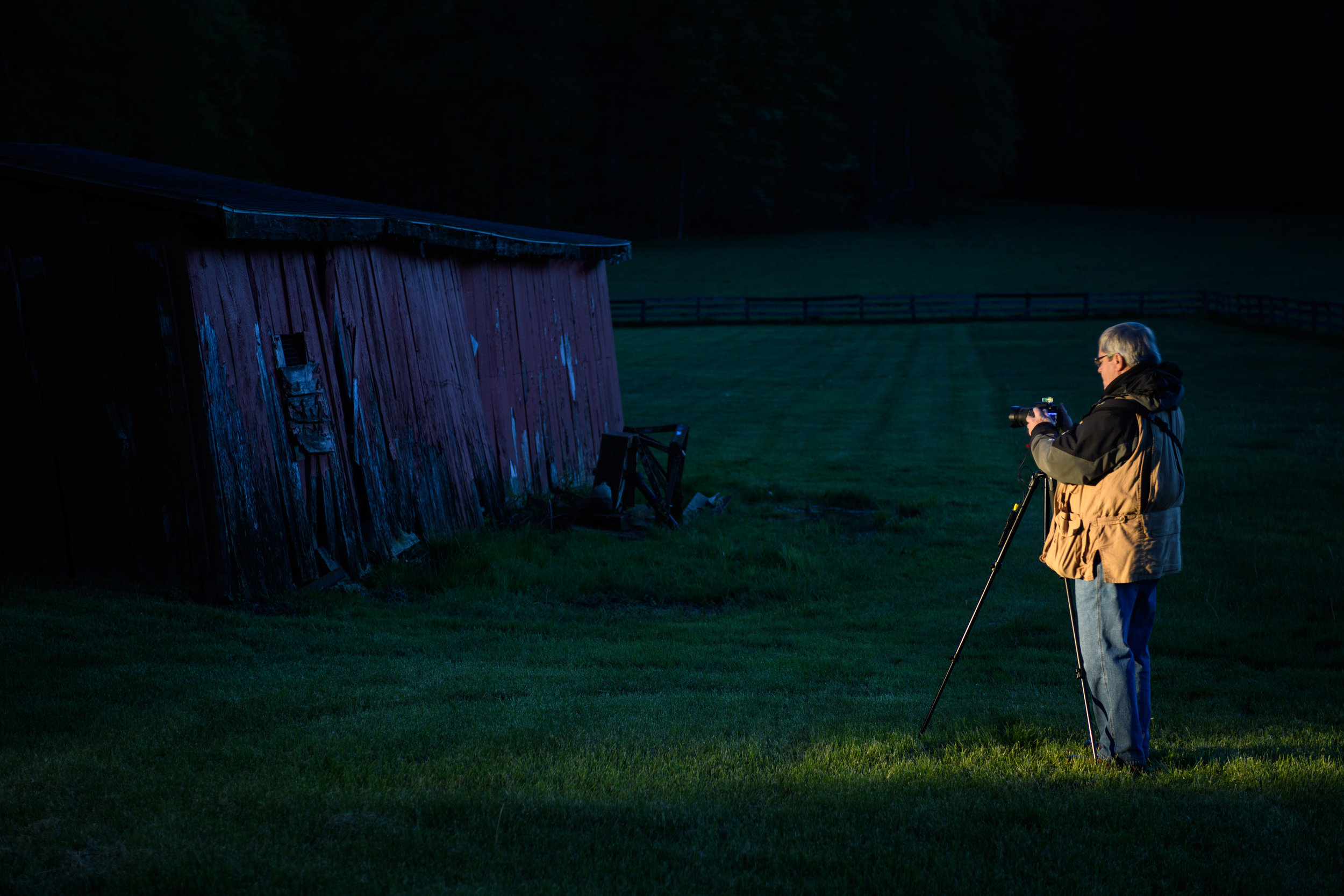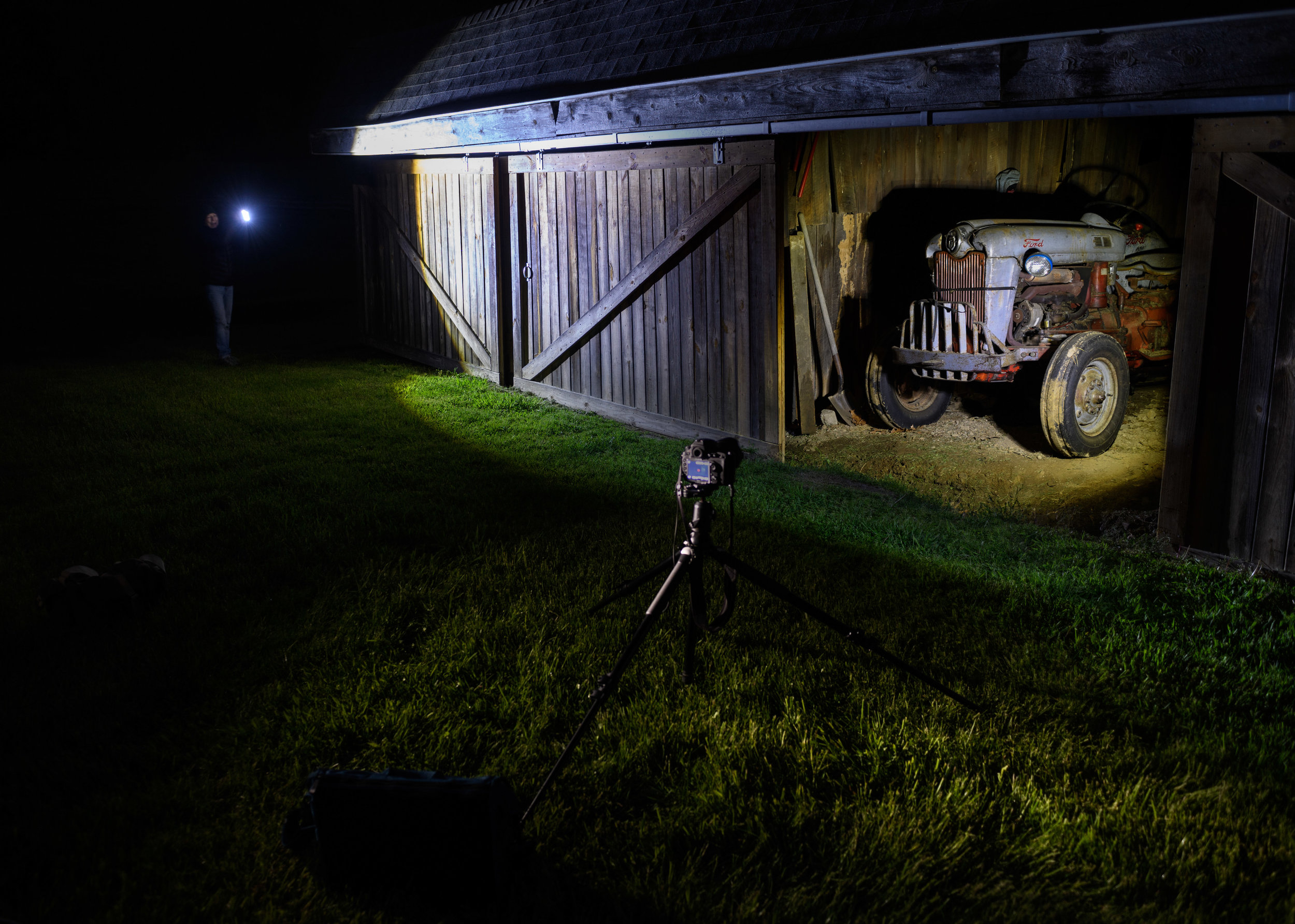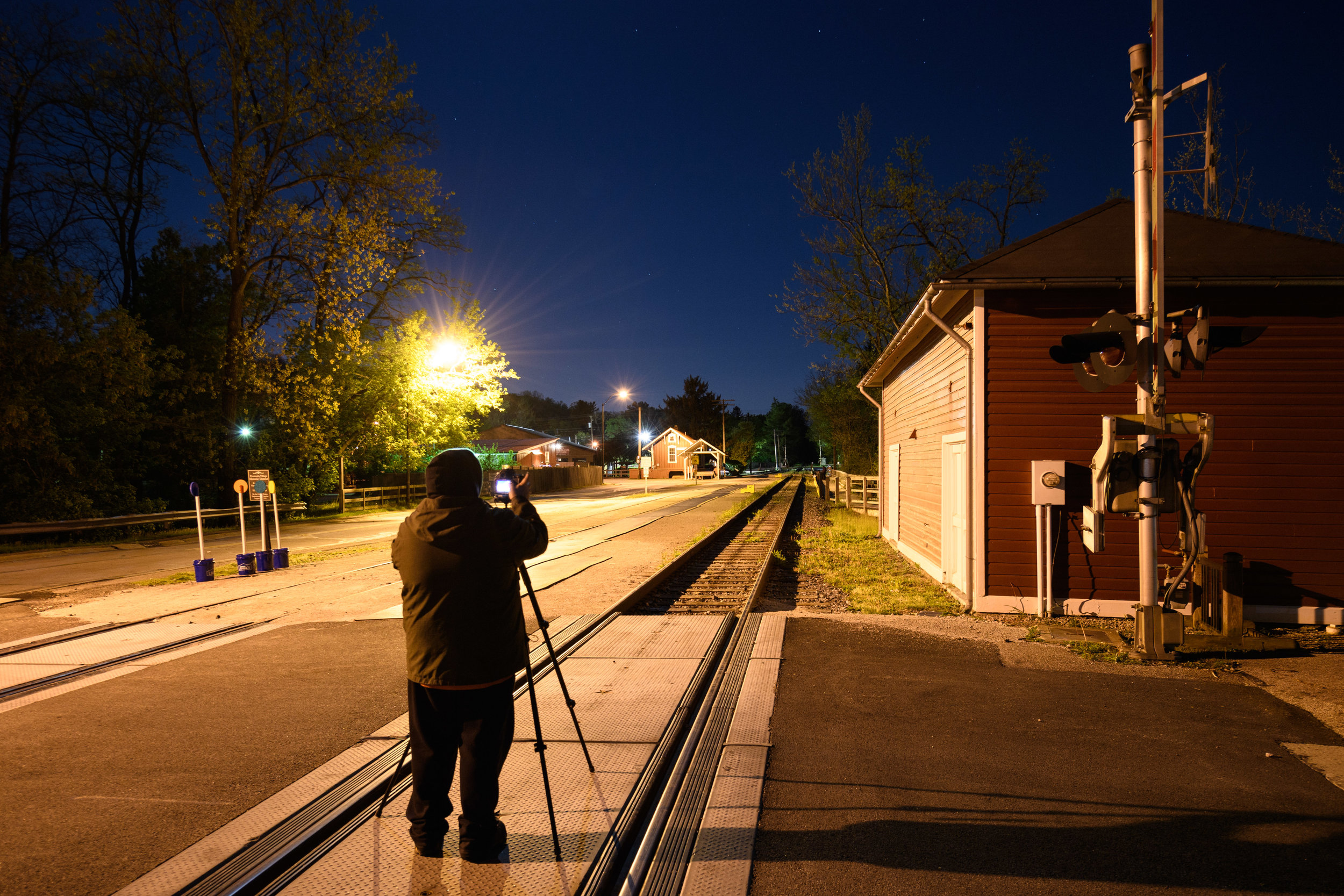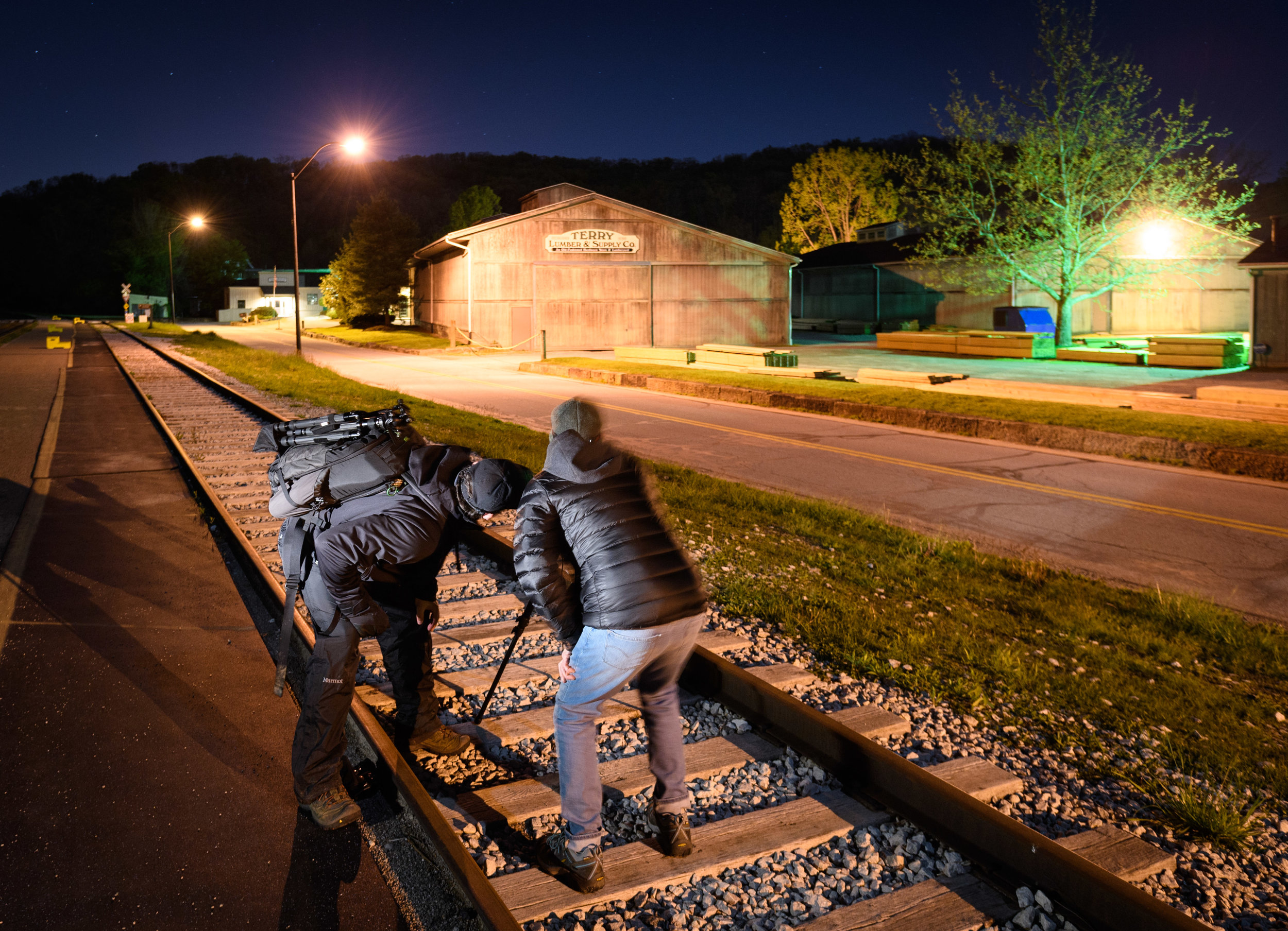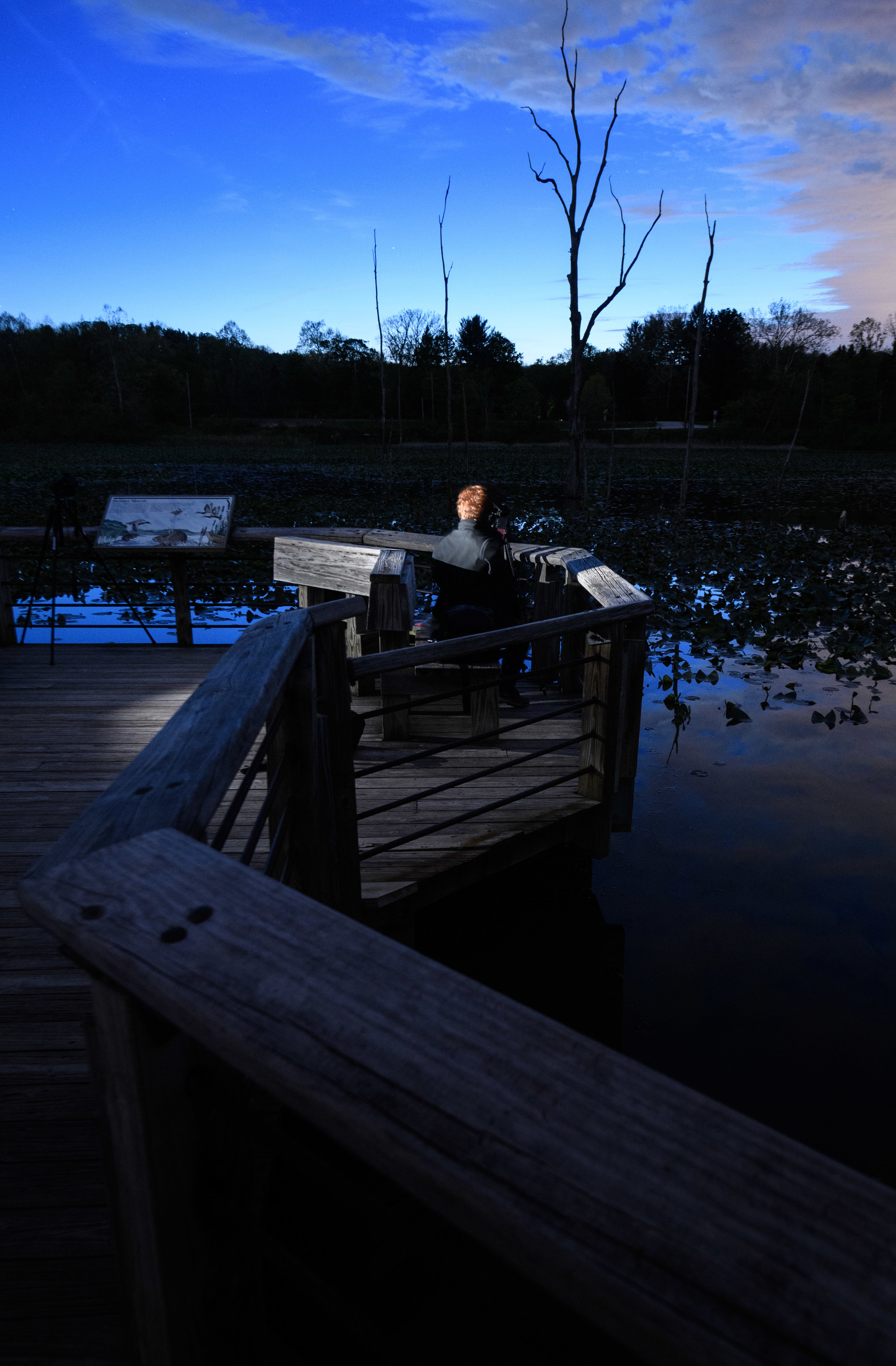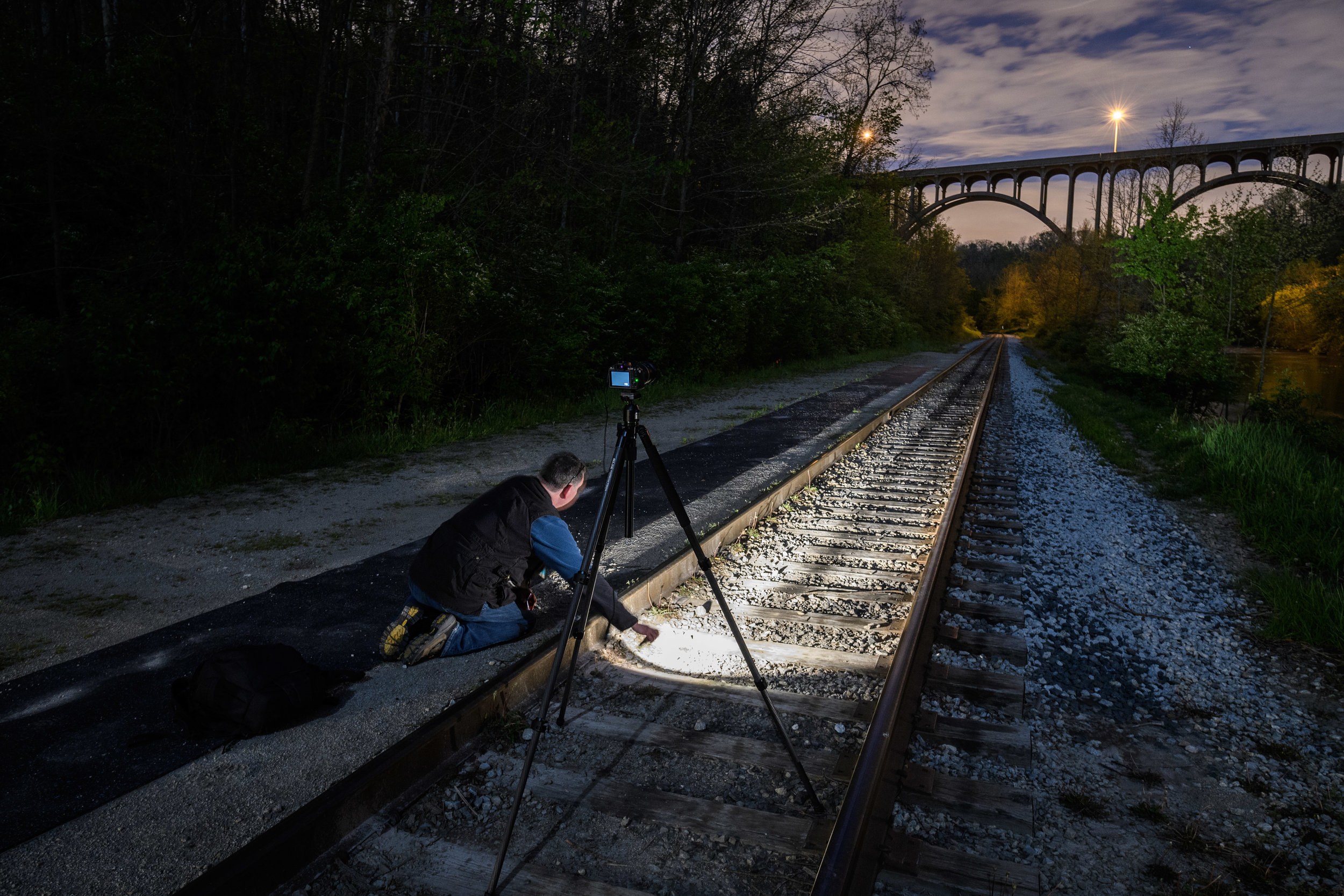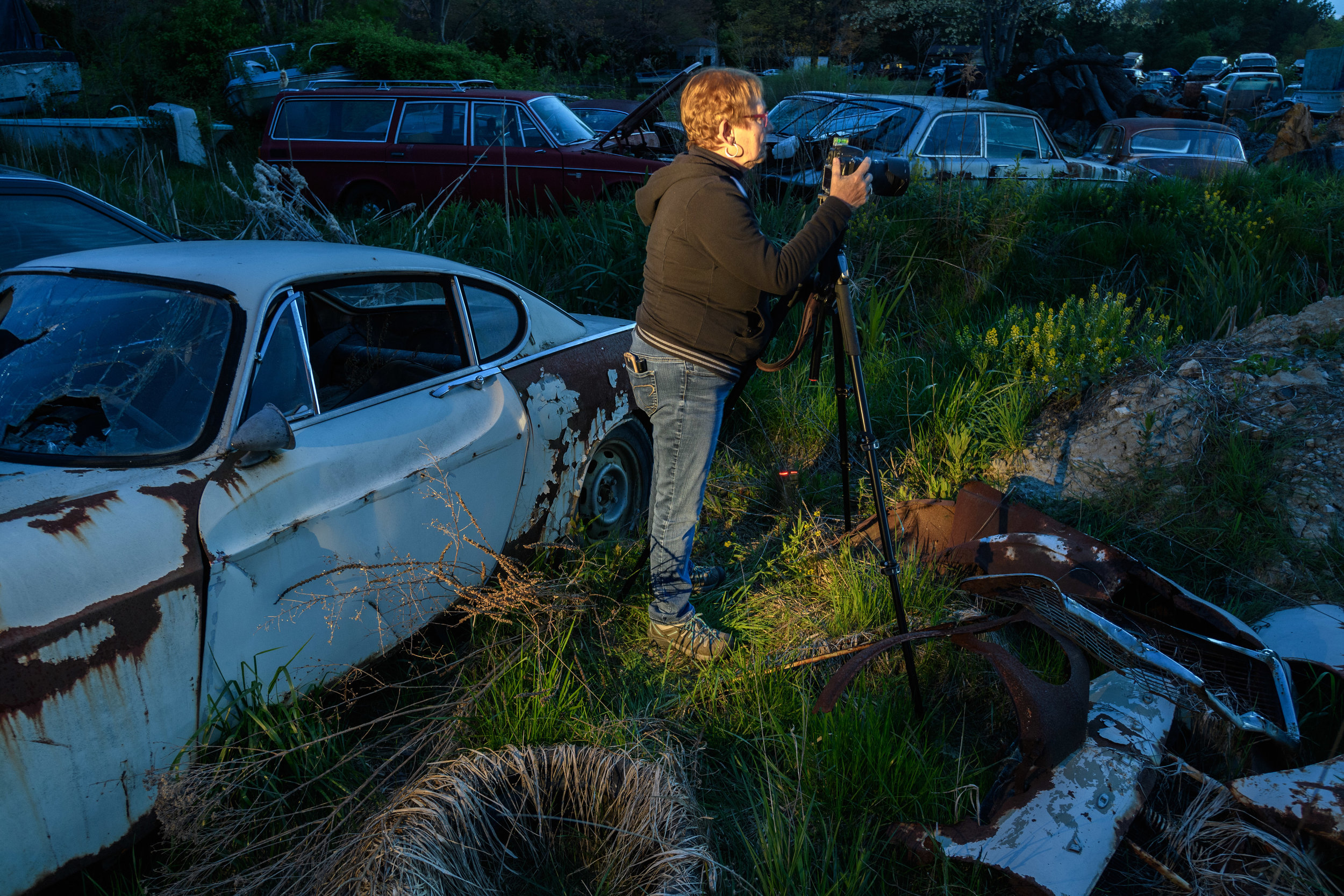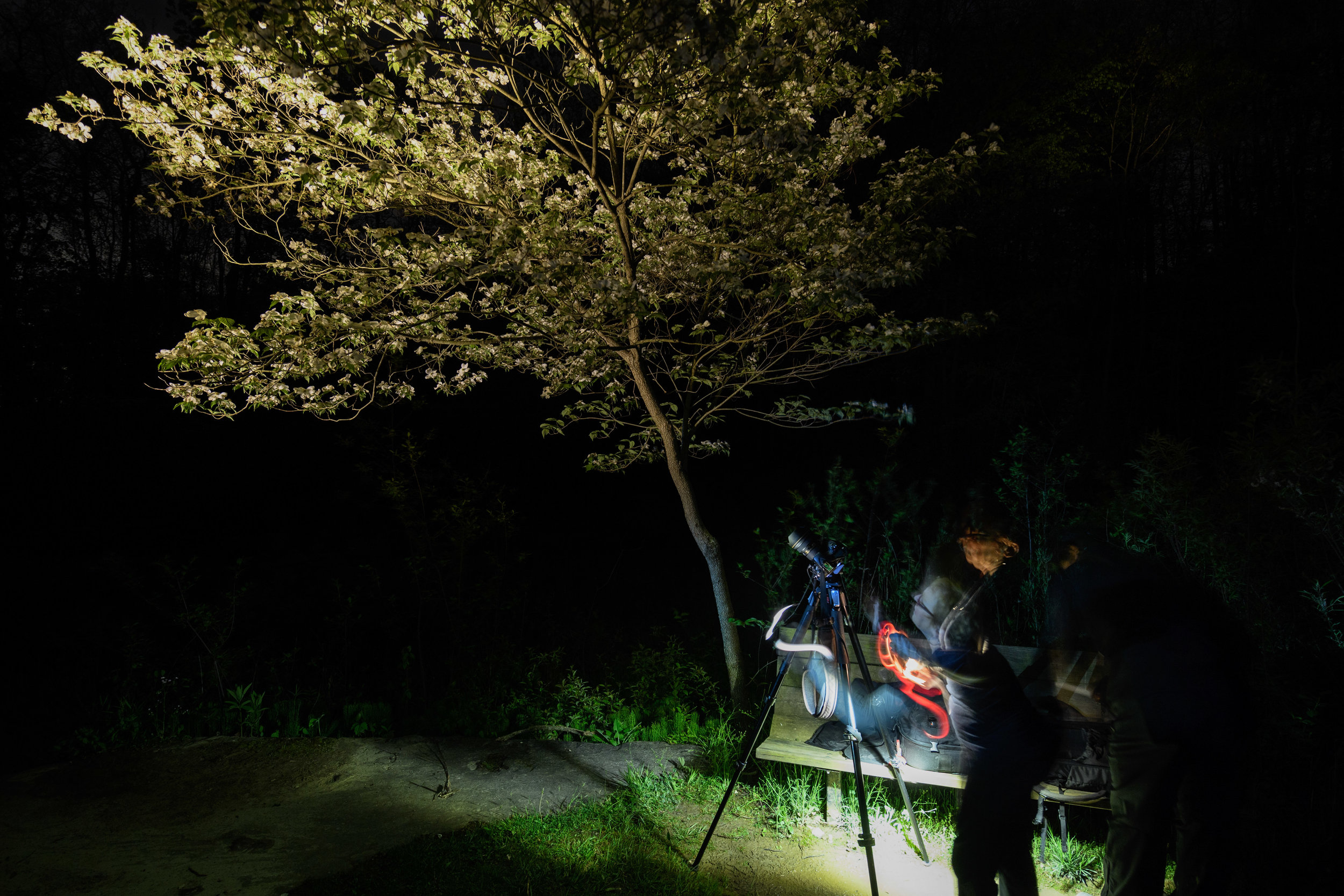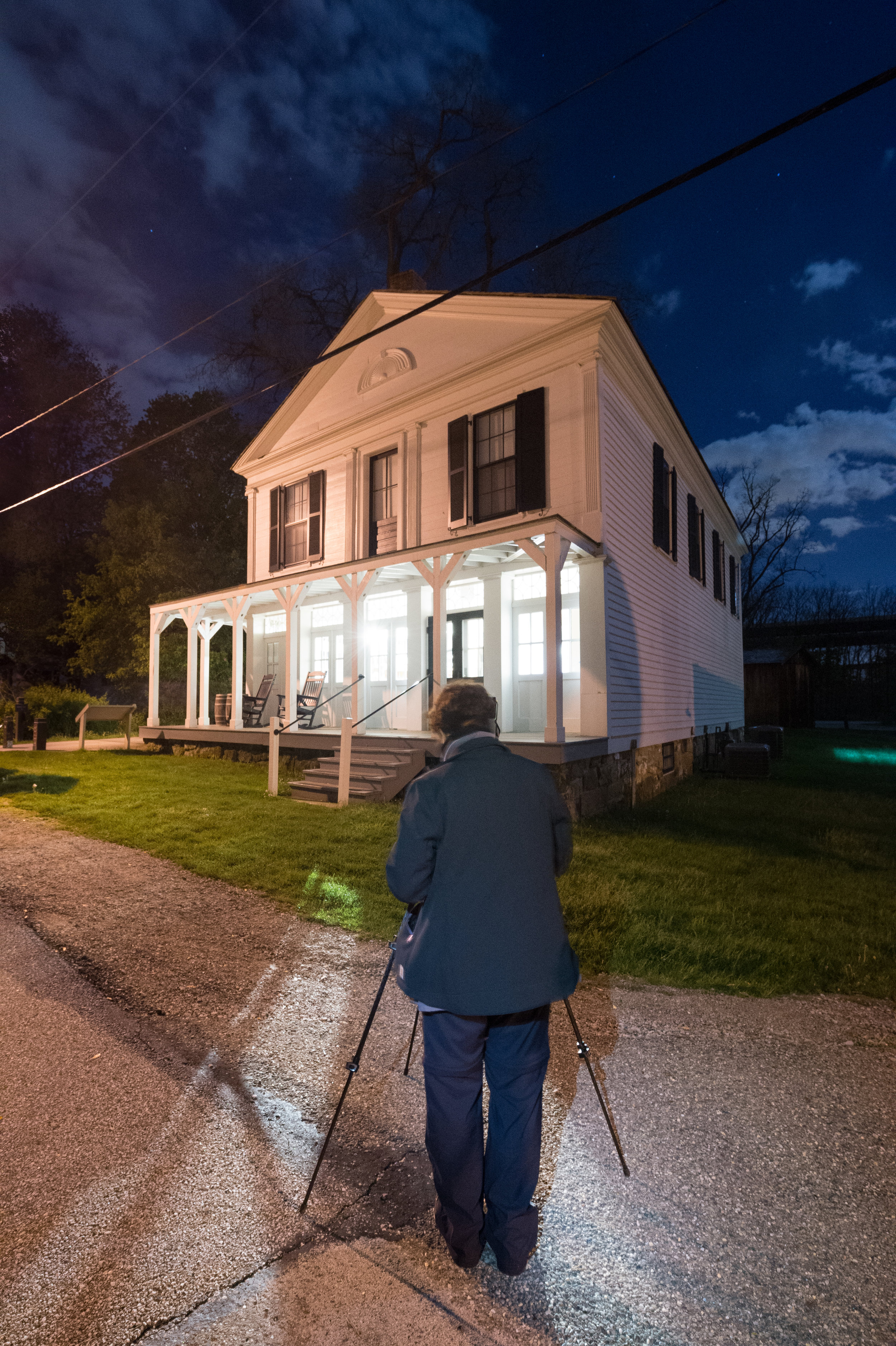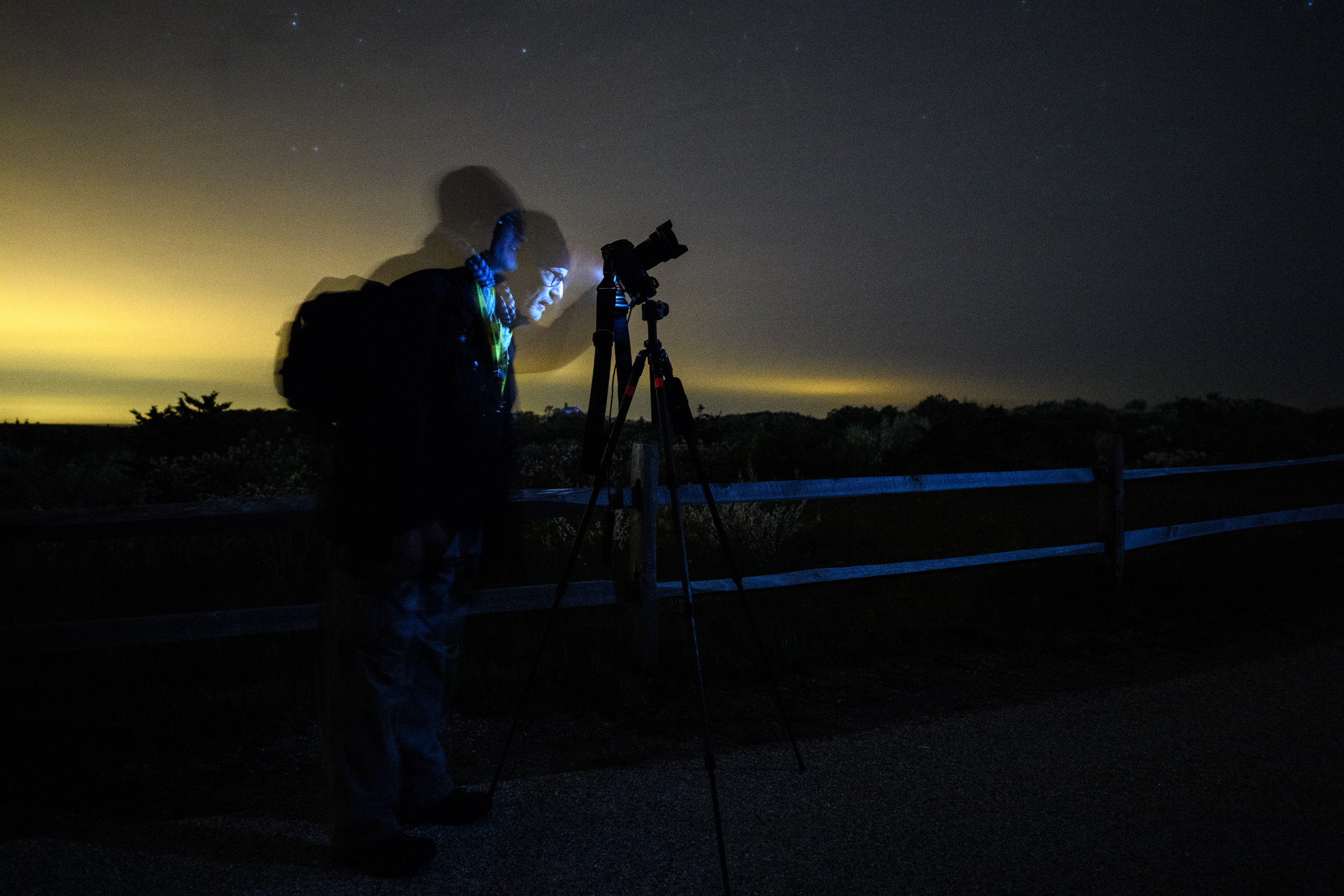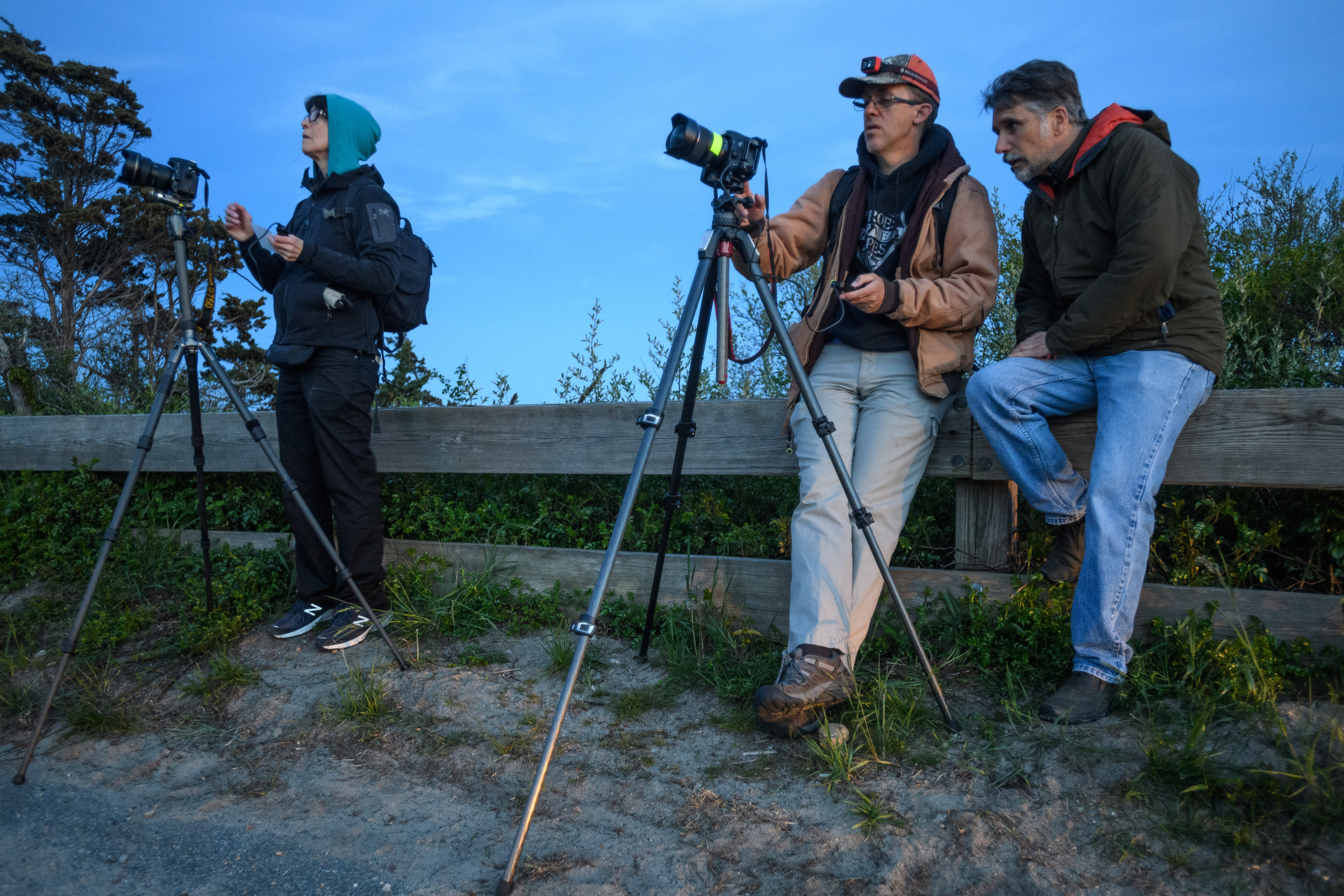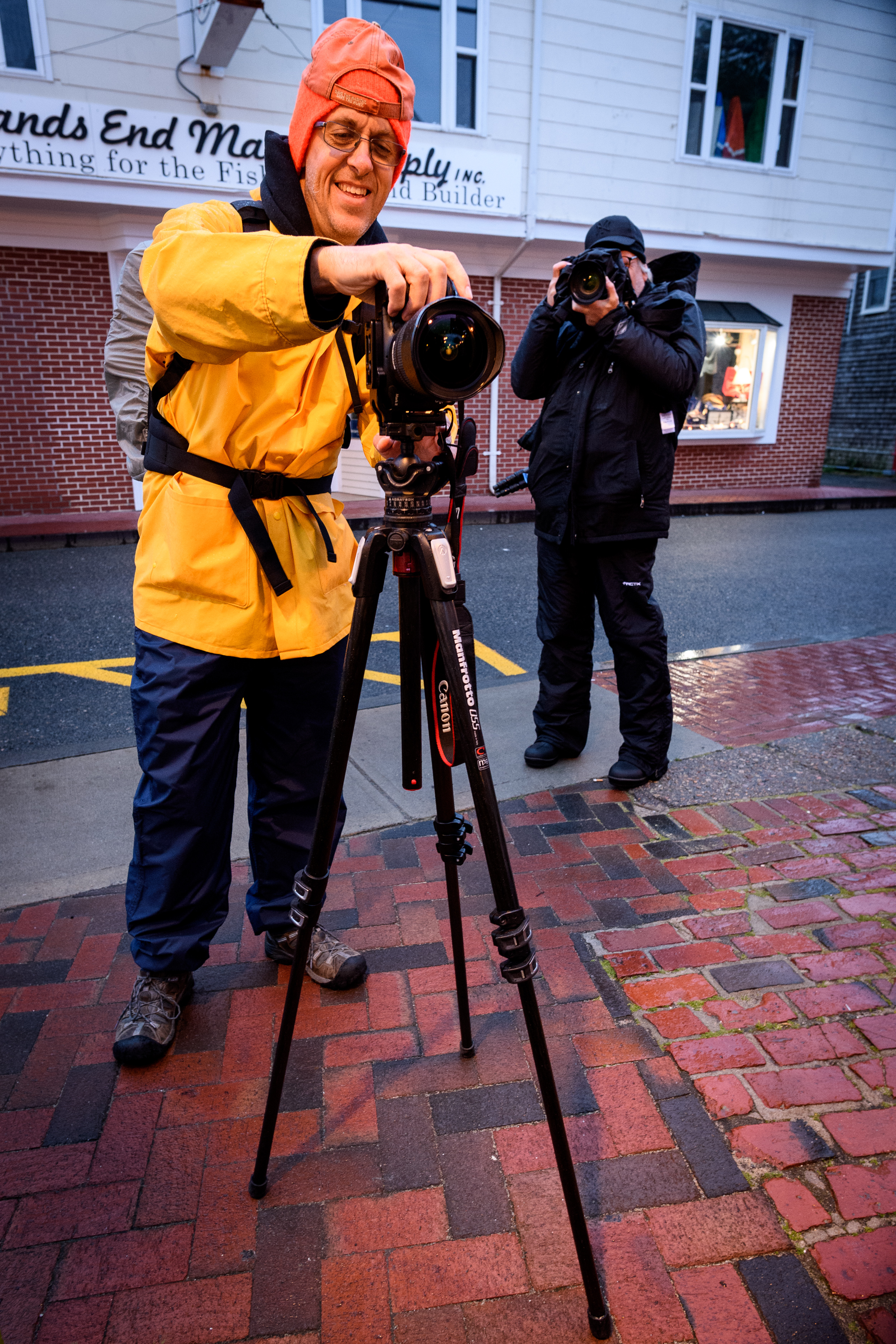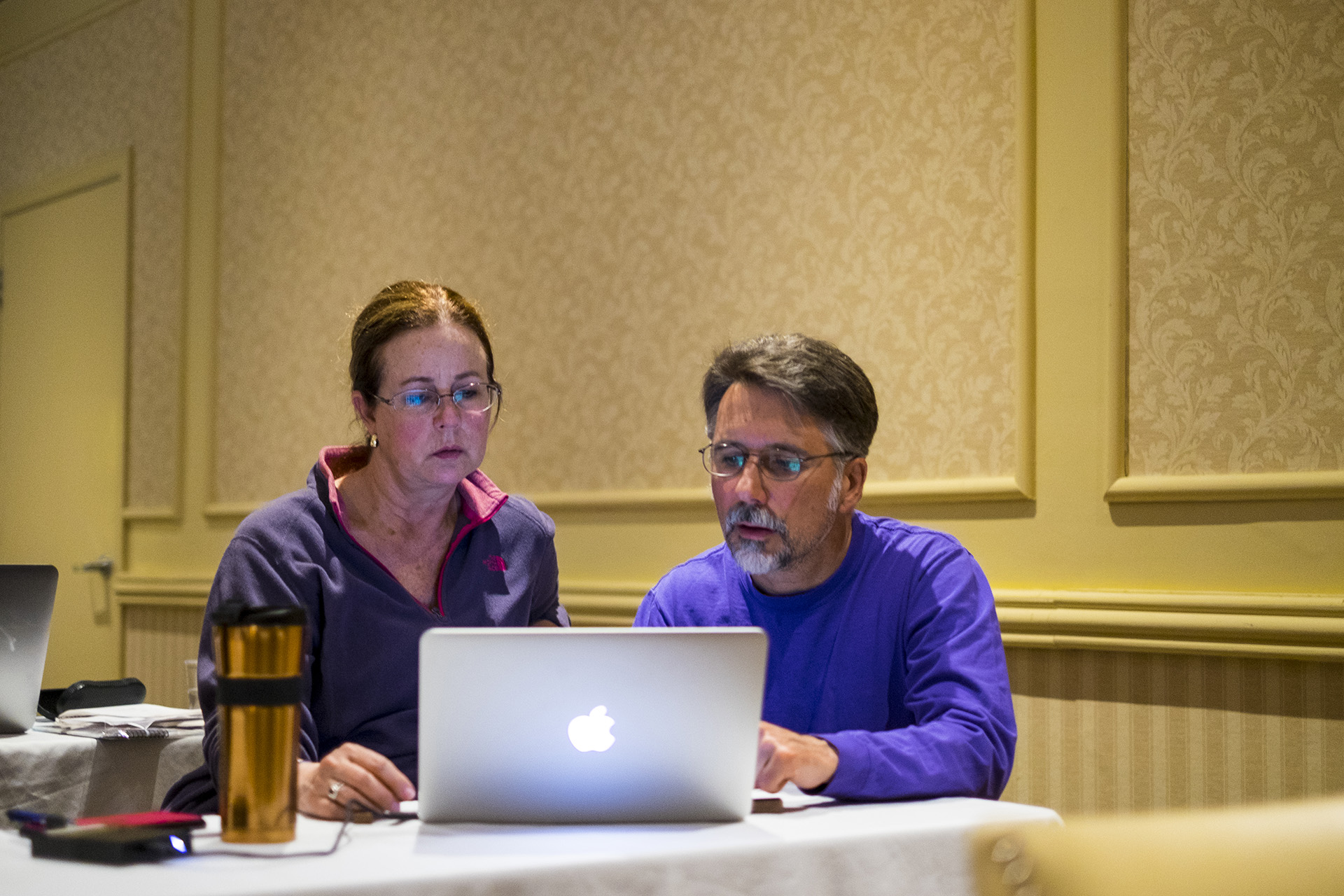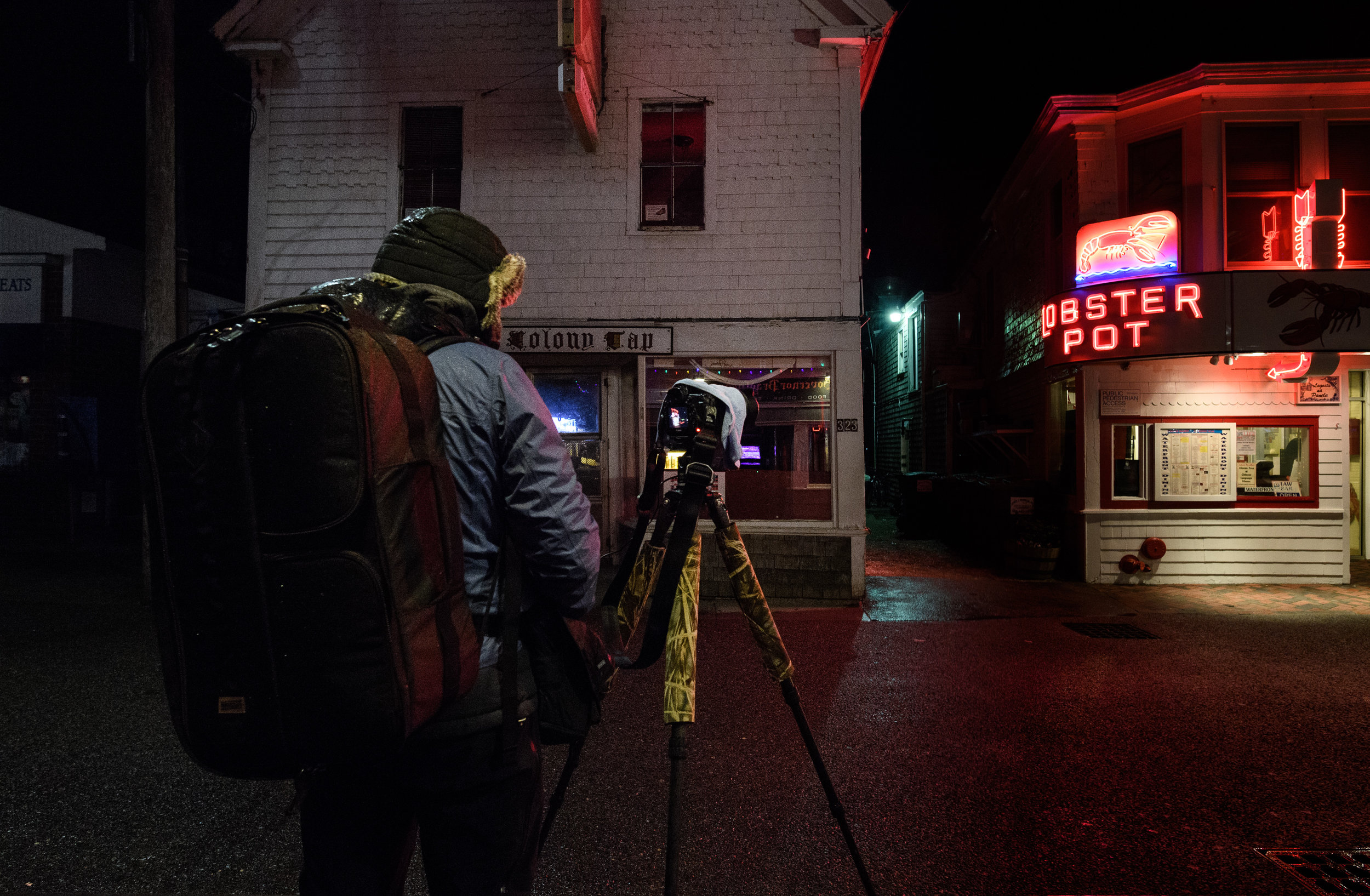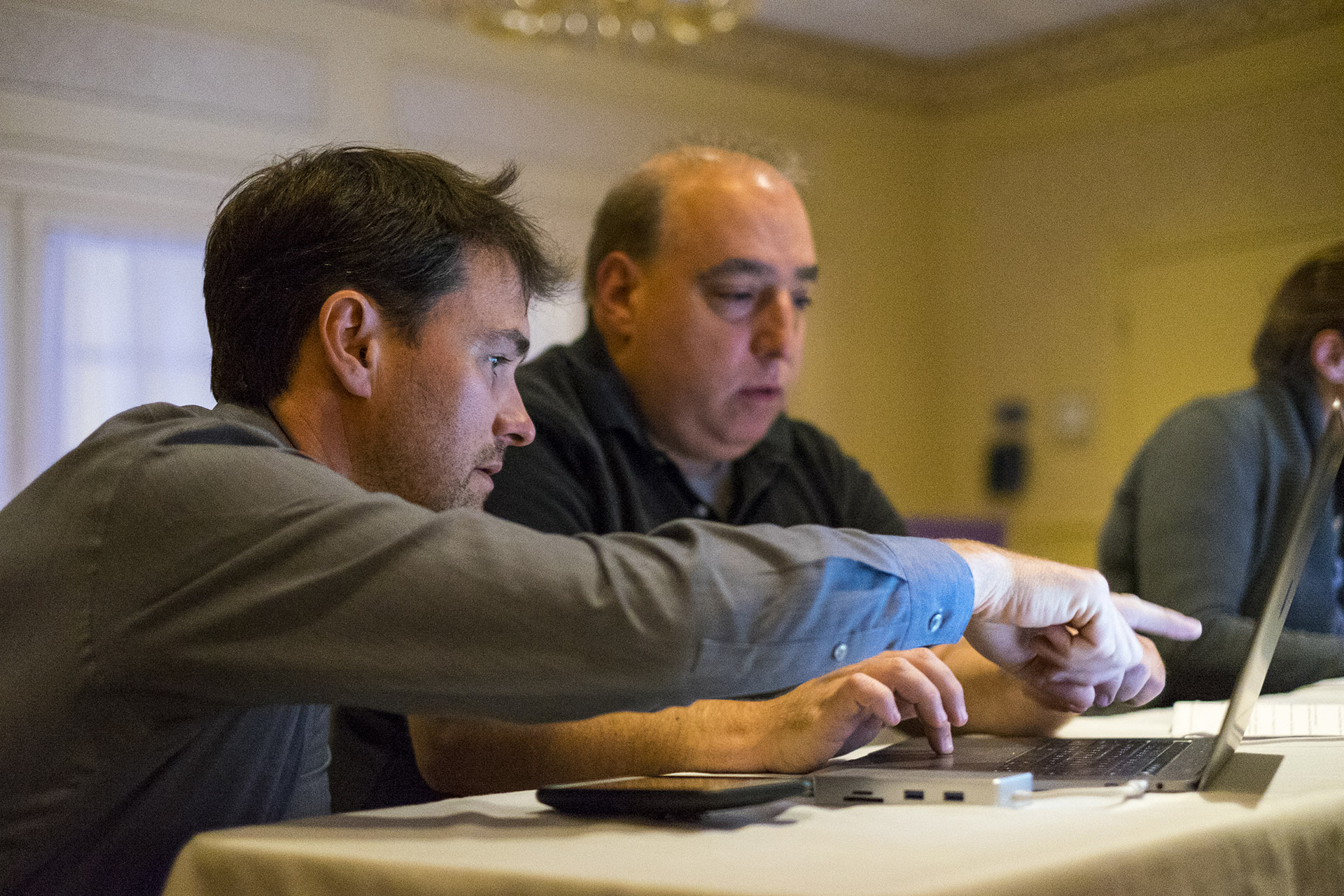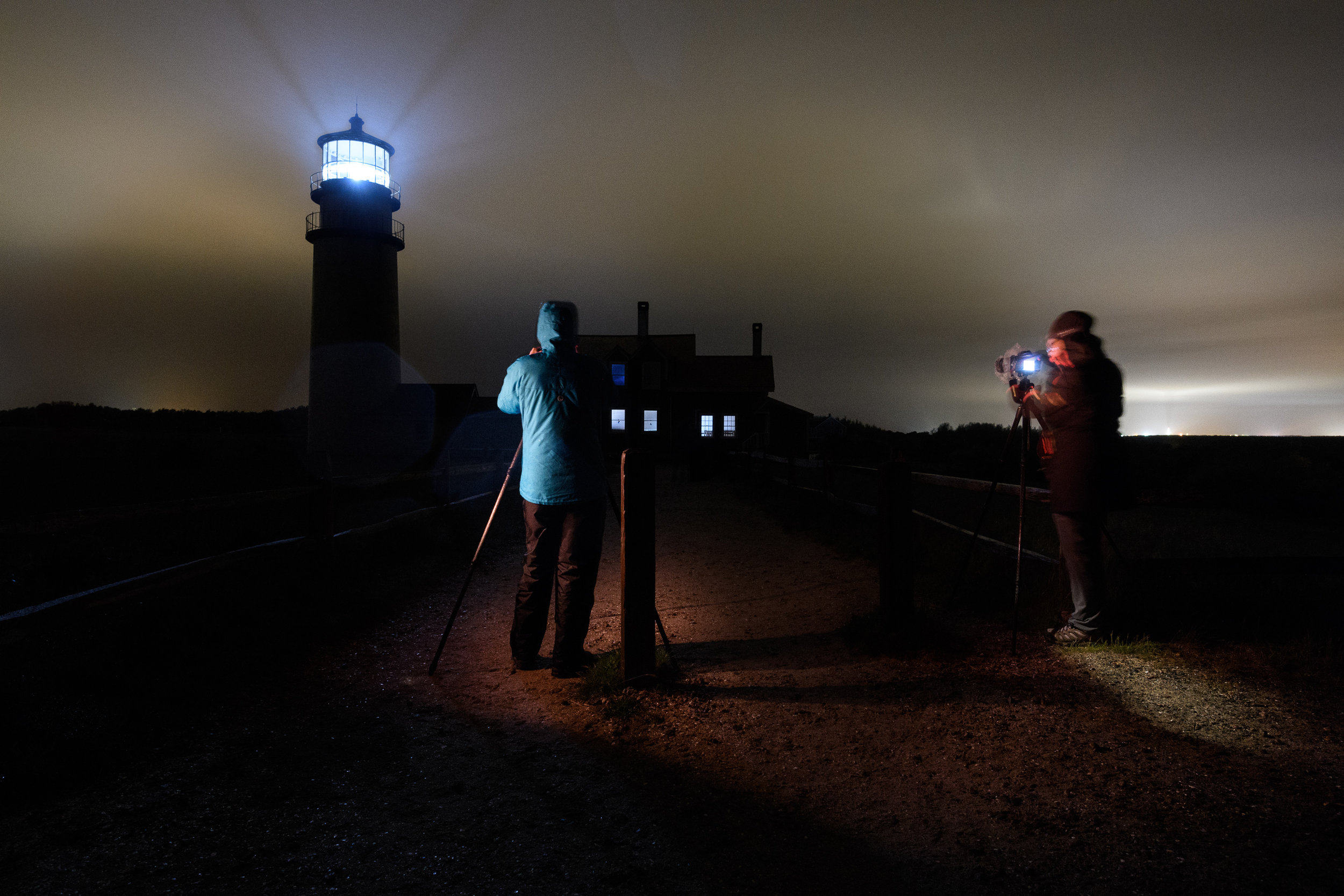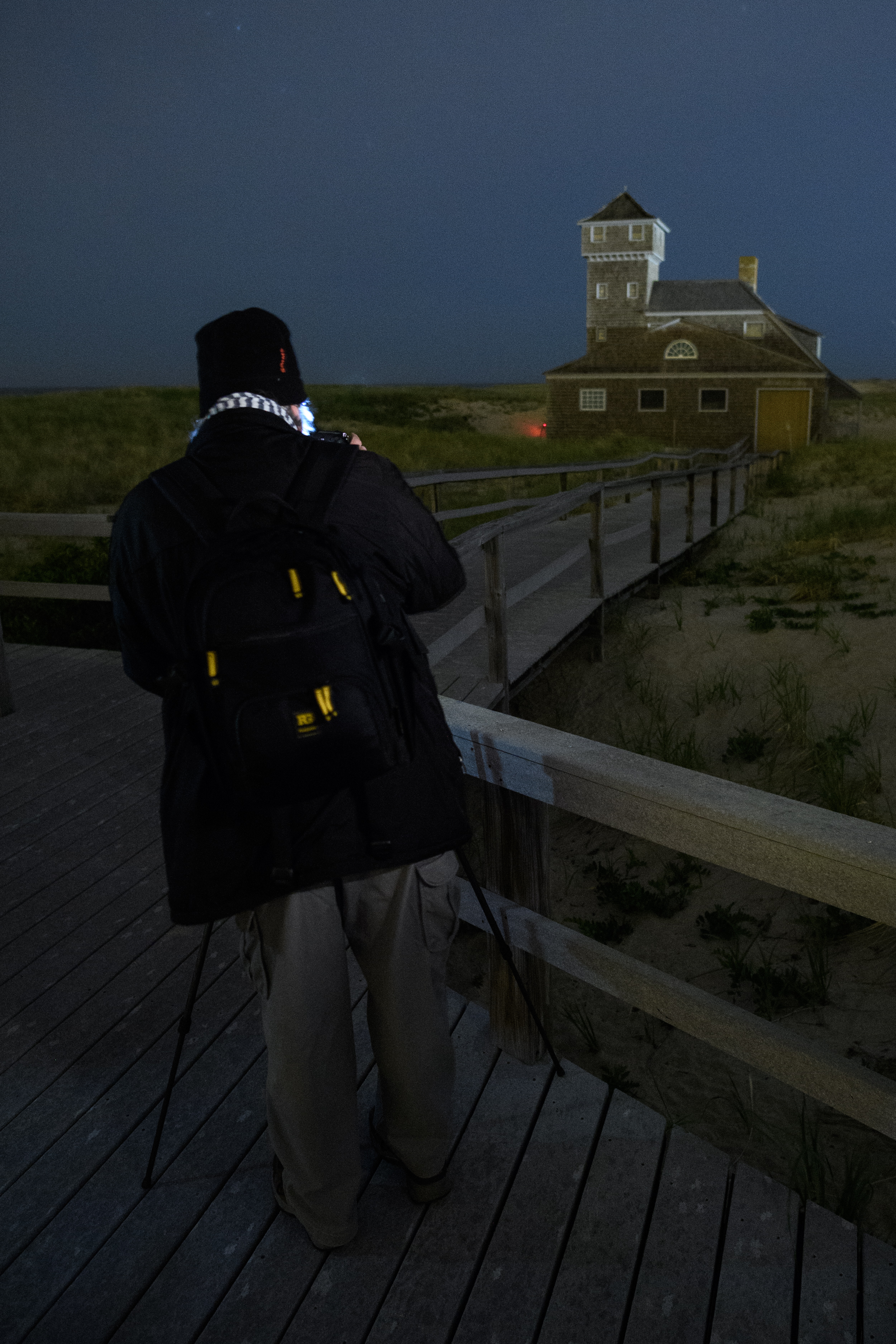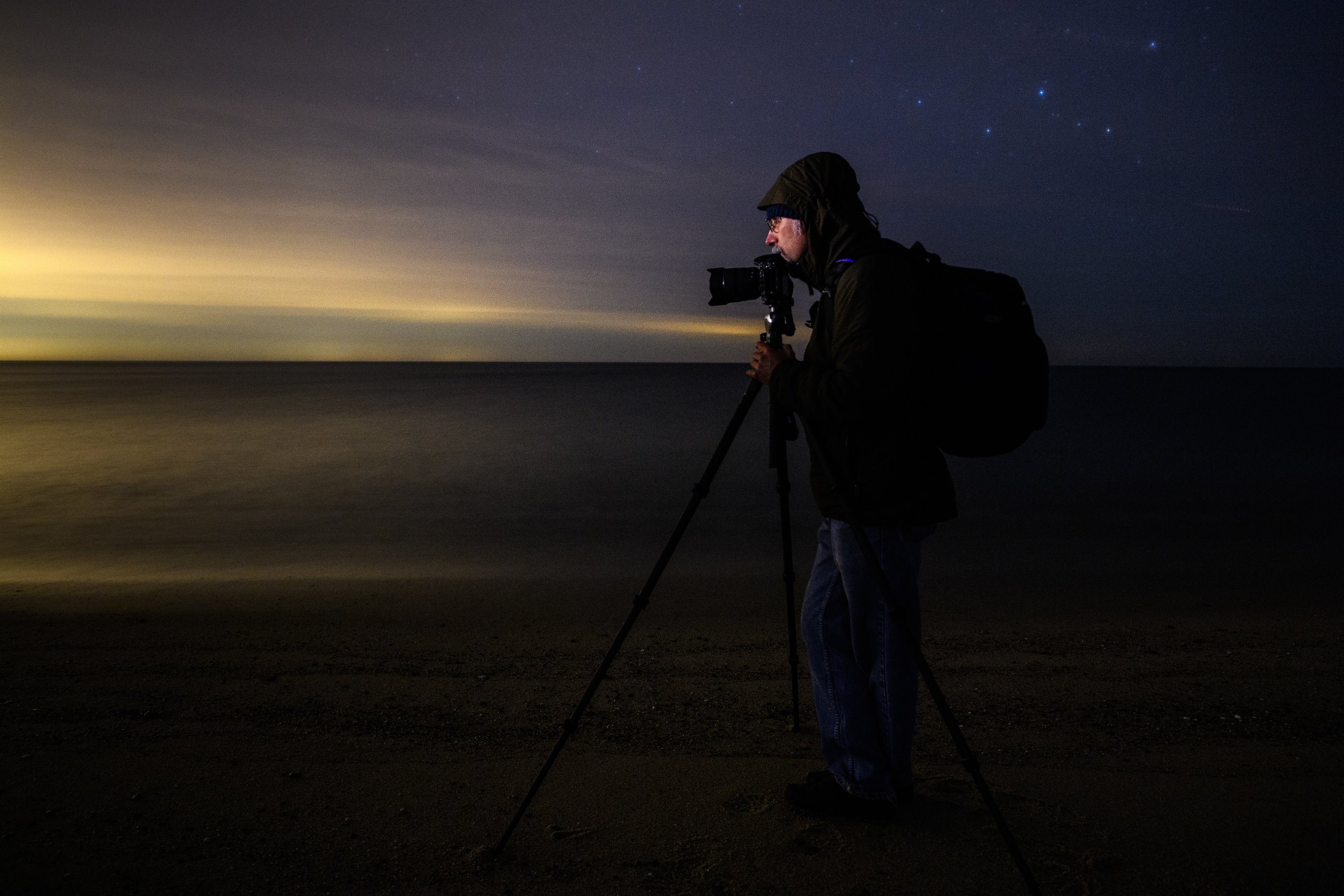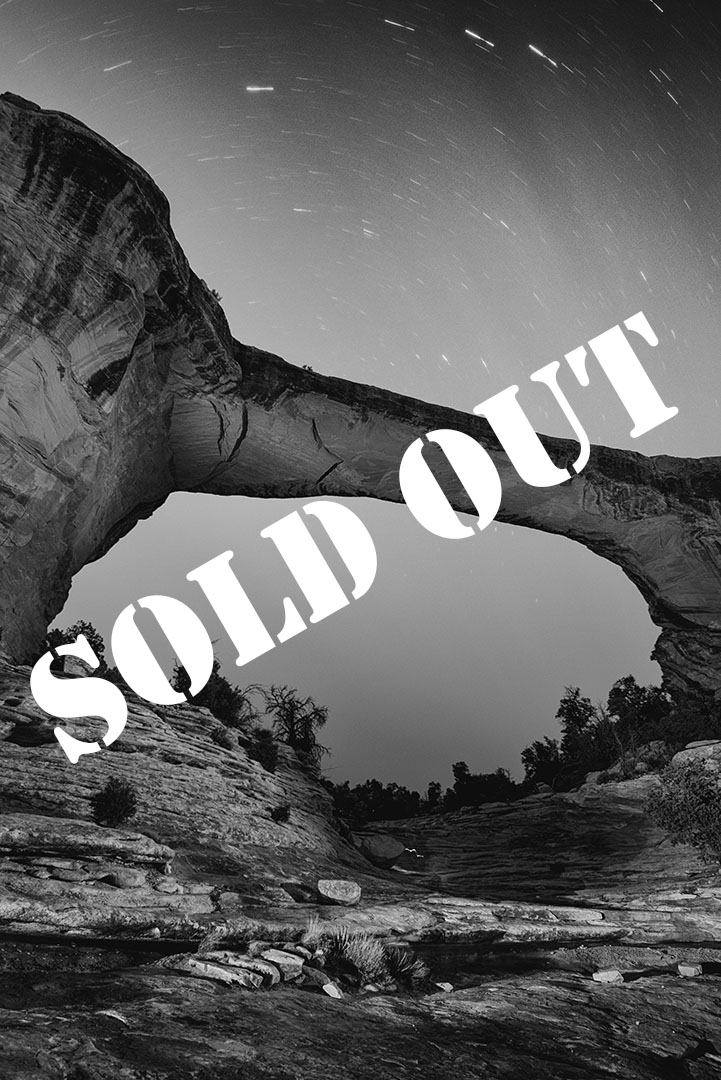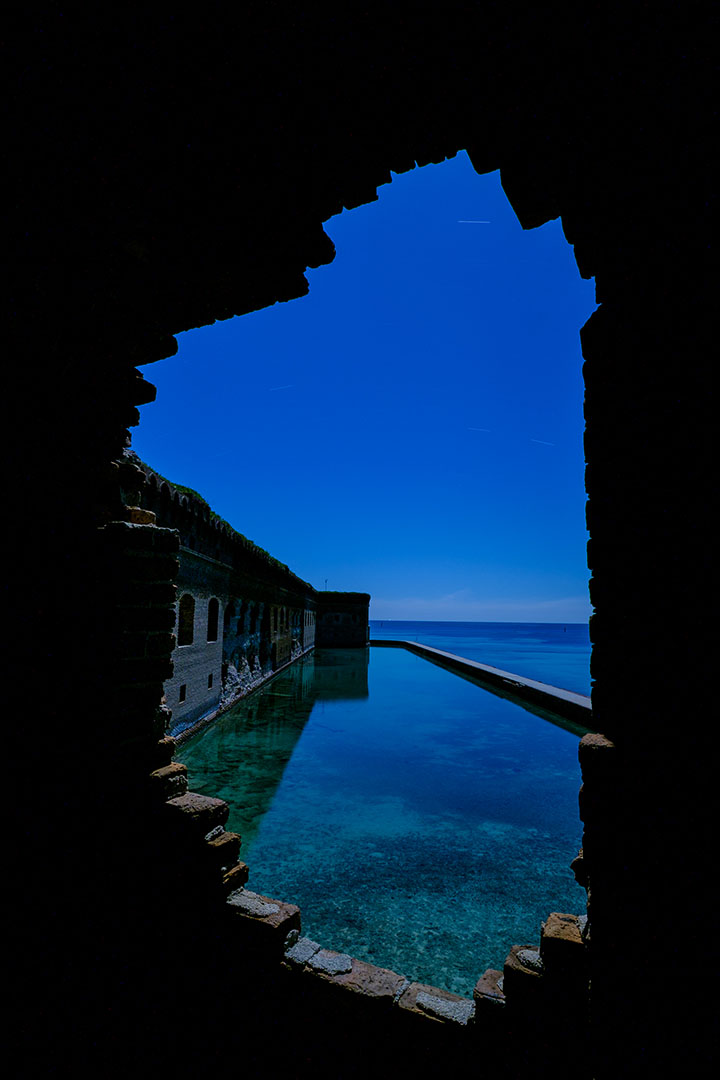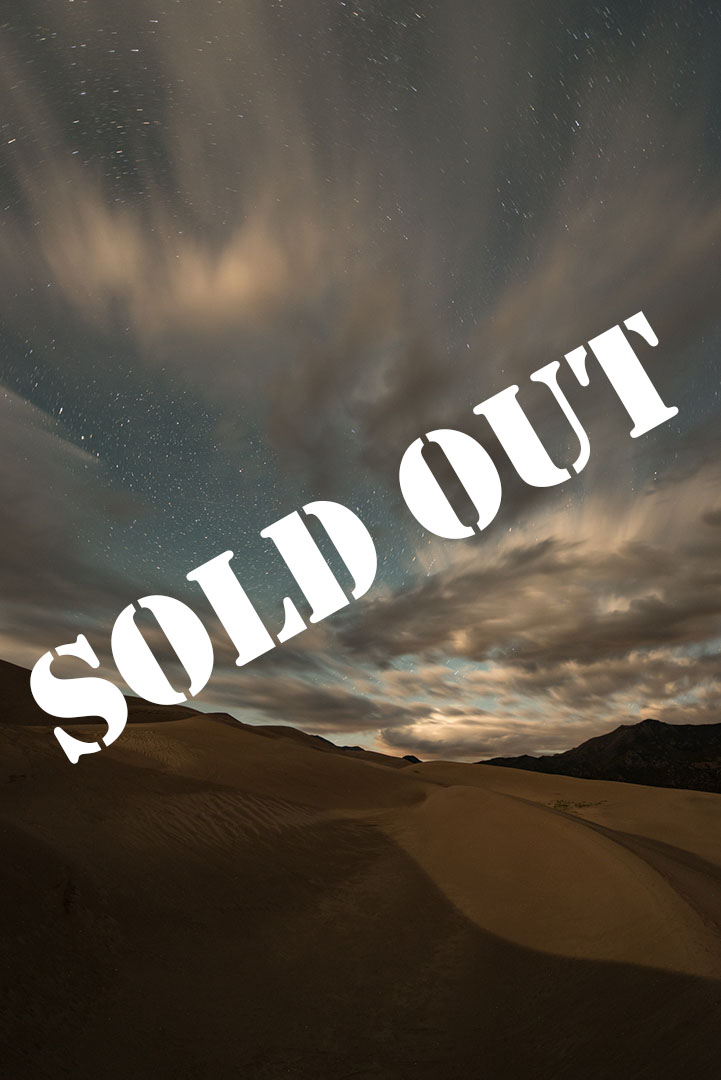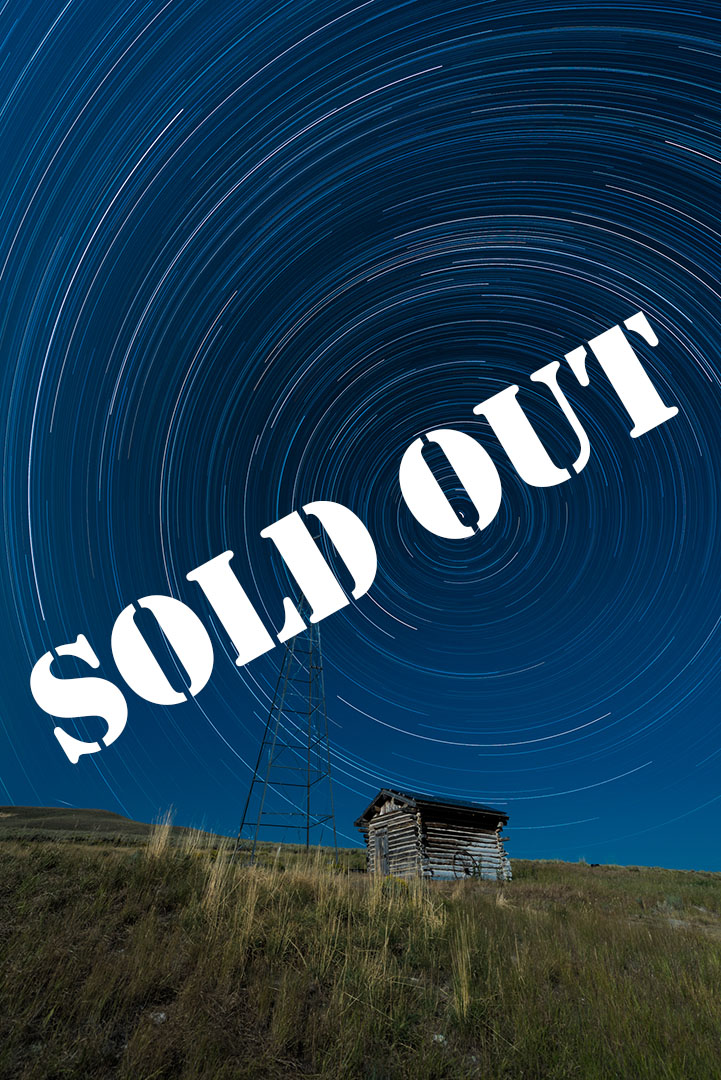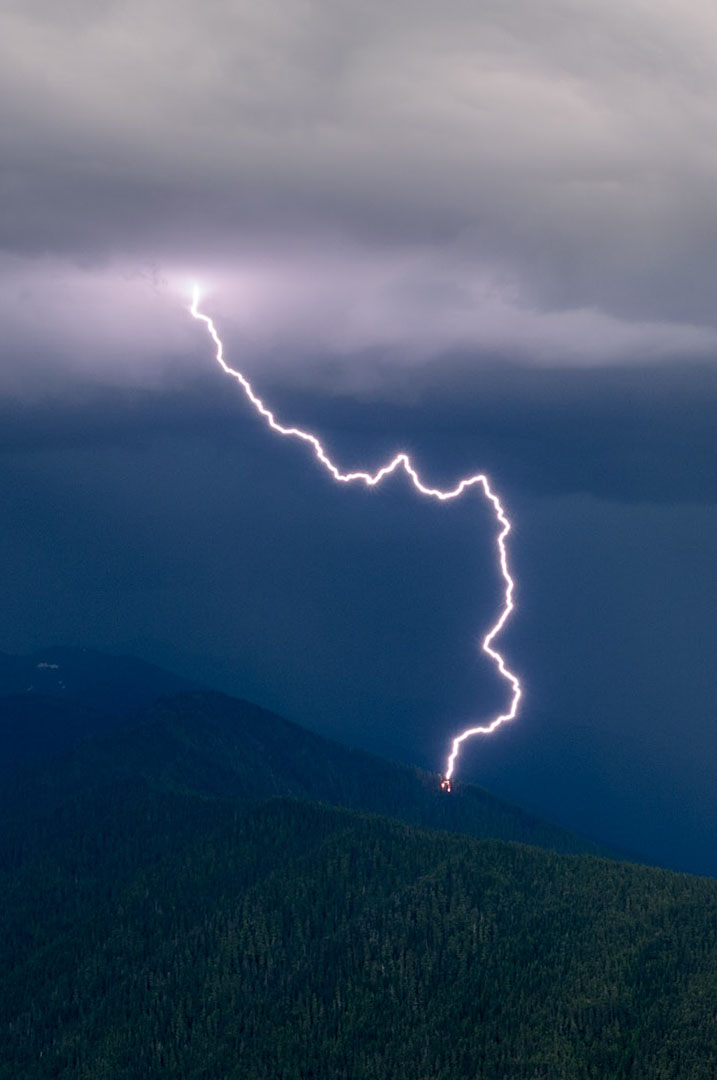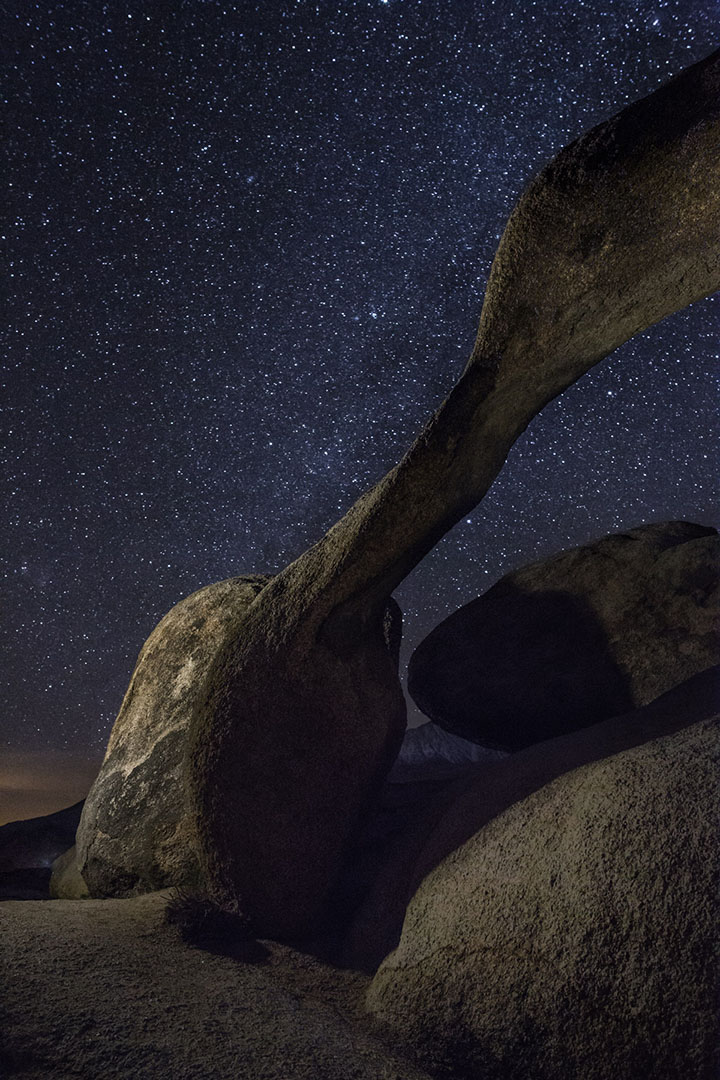Sea Stack at Ruby Beach, Olympic National Park. Nikon D3s, Nikkor 17-35mm f/2.8. 120 stacked exposures shot at 20 seconds, f/2.8, ISO 1600. Light-painted with a Coast HP7R flashlight. © 2016 Chris Nicholson.
The Location
It’s hard for me to choose a “favorite” national park, because it’s like trying pick a favorite item from a buffet of candy and ice creams. But Olympic National Park would certainly be near be near the tippy-top of my list, if not the cherry at the very top.
Not only is Olympic simply beautiful, but its three distinct ecosystems—mountain, rain forest and coast—all present unique photography opportunities. You could literally be shooting an entirely different scene and genre from one hour to the next.
My favorite of those ecosystems? That’s an easier question to answer: the coast. I grew up in New England only a mile from the shore, so my affinity for the water is strong. And my favorite spot on the Olympic coast to photograph? Ruby Beach.
“Ruby Beach is a stunning stretch of coastline ... flanked by high cliffs, lined with hundreds of ancient, massive driftwood logs, divided by Cedar Creek, and punctuated by picturesque sea stacks amid the crashing Pacific waves.”
During my four visits and shoots at Olympic National Park, I’ve shot at Ruby Beach in three of them. When I visit the park again this September to prepare for the two workshops we’re hosting there, I’m certain to shoot at Ruby again.
Ruby Beach is a stunning stretch of coastline that is a perfect location for photographing sunsets, in sunset light, on overcast days (tide pools!) and, of course, at night. The shore is flanked by high cliffs, lined with hundreds of ancient, massive driftwood logs, divided by Cedar Creek, and punctuated by picturesque sea stacks amid the crashing Pacific waves.
(Shameless plug: I’d be happy to personally show you around Ruby Beach this September, when Matt Hill and I run our two workshops there. A couple of seats are still open for each week—September 17 to 22 and September 24 to 29—so sign up today!)
Here are a few of photos to give a sense of what Ruby Beach looks and feels like:
The Setup
On a July afternoon in 2016 I scouted Ruby Beach for a night shoot, and planned three setups for once the sky grew dark. I knew I would have a good view of the Milky Way, and intended to frame it with sea stacks in two of the setups, but also wanted to rip one long exposure to capture some southern star trails.
One thing I kept in mind while scouting is something that can be important when working around the coast: Changing tides affect the appearance of the shoreline. To get a good idea of what the water levels would look like once shooting at night, I used the Tide Graph Pro app. I looked up the tide chart for that date (see Figure 1), noticed where the water level would be during my nighttime shoot (about 9 pm. to 1 a.m.), found a corresponding tide level during daylight (about 1 p.m.), and visited at that time for scouting. This way I didn’t have to imagine what the water would look like later—I knew exactly.
Figure 1. Tide Graph Pro showed me that the tide level during my shoot would be at about 1 foot above the zero tide height. I saw that the water would be at about 1 foot also around 1 p.m., so that is when I did my daytime scouting.
Incidentally, knowing the tides is important for safety too, especially in Olympic National Park, where many headlands are impassable at high tide. You don’t want to venture around a promontory at low tide and get trapped a few hours later when the water floods your trail back.
The Gear
Ruby Beach is certainly not a long hike from the car—it’s only about a half-mile round-trip—but because I was working on a beach, I didn’t want to be burdened with a heavy bag that I’d be tempted to put down in the sand during my several planned hours out. So I left some of my gear in the car and brought along a one-camera, two-lens, one-tripod kit:
- Nikon D3s
- Nikkor 17-35mm f/2.8 lens
- Nikkor 28-70mm f/2.8 lens
- Gitzo 3541LS tripod w/ Gitzo GH3382QD Series 3 ball head
The Exposure
For the star trail photo, I chose a single sea stack about halfway between Cedar Creek and Abbey Island, and once set up I started to “work the scene”—i.e., I shot from several different angles, some without light painting, some with varying approaches to light painting, some including the Milky Way, some including reflections in the sand as the tide receded. You can see a couple of the variations in Figures 2 and 3.
Figure 2. My first composition included the reflection in the wet sand, which is how I visualized the photo during my daytime scouting, an approach I abandoned while adjusting the composition.
Figure 3. My second attempt at a composition included a little of the Milky Way to the left. I also tried scraping the wet, pebbly shore with some light painting to emphasize the texture of the wavy sand.
I ultimately chose an angle that allowed me to get a little of the Milky Way behind the sea stack. I didn’t like the position of the galactic core in the frame, but figured that as it moved over the next hour or so, it would eventually be in a spot I did like. This led me to a key decision in how I approached the exposure: I chose to create my star trails using a long series of short exposures that I would later stack in post-production.
I could have created the star trails using one very long exposure, but there are drawbacks to that approach, including a significant drain on the camera battery, along with the introduction of long-exposure noise, which would be particularly problematic in warm midsummer temperatures. So instead I opted for “star stacking.” Star stacking is a post-processing technique for creating star trails that solves many of the image-quality issues inherent in night photography. (I will likely write more about all of that in a future blog post, so please stayed tuned for a year or two.)
Star stacking involves shooting multiple frames of the scene that are later layered together in Photoshop in a way that combines the stars into the same trails they would have made in a long exposure. You can do this with shutter speeds of any length. For example, if you wanted to create one-hour star trails, you could star-stack 12 5-minute exposures, or 30 2-minute exposures, or 60 1-minutes exposures, or so on.
“Star stacking is a post-processing technique for creating star trails that solves many of the image-quality issues inherent in night photography.”
For this photo, I shot 120 20-second exposures, giving me the equivalent of 40 minutes of star trails. Shooting that many frames meant I’d have more work to do later in Lightroom and Photoshop, but there was a reason I chose this approach, and it goes back to the decision about the Milky Way. I wanted to be able to pick out of my sequence one frame in which I liked the position of the galactic core, and I wanted that frame to have crisp star points.
I had my lens zoomed to 19mm, and using the 400 Rule, I knew that my shutter speed could be no longer than 20 seconds before the stars would start to blur. Therefore, I set my shutter speed to 20 seconds, and calculated that I would need 120 frames to produce my 40-minute star trails.
I set my aperture to f/2.8, and I used hyperfocal distance to ensure that both the sea stack and the stars would be in focus. I set the ISO to 1600, which could normally be quite low for star points, except that the moon was close to rising—not close enough for its light to be seen by the naked eye, but close enough to brighten the sky a bit during a long exposure. Shooting at f/2.8, I would have plenty of stars to trail, so I wasn’t concerned about them being a little dim, and because I would be light painting the sea stack, I wasn’t concerned about lacking shadow detail.
The last piece of the puzzle was the light painting. The sea stack was too prominent in the frame to use as a silhouette—half the composition would have been pure black. So I wanted to light paint the rock in a way that would bring out its texture and color. I experimented with different angles and determined the best option was lighting from the right, standing as close to a 90-degree angle to the sea stack as I could without stepping into the waves. (See Figure 4.)
Figure 4. A self-portrait of me light painting the sea stack.
I also experimented with different flashlights and chose my Coast HP7R, because its wide, crisp edge-to-edge beam allowed me to evenly paint the entire sea stack from a relatively close distance without having to move the light. Figure 5 is the painting approach I settled on.
Figure 5. The final approach to the light painting, after trying several variations.
The Shoot
Once my exposure and light painting strategies were set, all I needed to do was execute the sequence. Because I was shooting 20-second exposures, I didn’t need an intervalometer, so I simplified matters by using a wired remote shutter release that I could lock (specifically, the Nikon MC-30A). The camera was set in Continuous shooting mode, so all I needed to do was push the button on the remote, set the lock, and let the camera do its thing 120 times.
During the first exposure, I did the light painting that I had already practiced. The remaining 119 frames have just a silhouetted sea stack. I went for a walk and enjoyed a quiet night on the coast under the dark skies of Olympic National Park.
Figure 6. The entire 120-frame sequence in Lightroom.
The Post-Production
The star-stack process is actually pretty simple for such a powerful technique.
After dumping the cards into Lightroom, I looked at the images and decided not to make any adjustments other than adding a standard touch of Vibrance and Clarity, and (this is important) in the Len Corrections panel I turned on Remove Chromatic Aberration and Enable Profile Corrections. I made those adjustments to one file, then selected the entire sequence and clicked the Sync button to apply those changes to all the highlighted files.
With the entire sequence still selected, I went to the menu and chose Photo – Edit In – Open as Layers in Photoshop. This maneuver created a new file by making a layer out of each of the selected frames of the sequence I had shot on the beach. (See Figure 7.) Because I initiated this process for over a gigabyte of collective data, once the computer was working I went to the kitchen and made a sandwich and a cup of coffee. My computer is no slouch, but it still needed a good 20 minutes to complete the job.
Figure 7. Each frame of the sequence was imported to Photoshop as individuals layers in one file.
The next step was to select all the layers (Figure 8), which can be done either by shift-clicking the first and last layers, or by pressing Control+Option+A (Mac) or Control+Alt+A (PC).
Figure 8. All layers selected.
Then, using the drop-down menu at the top of the Layers panel, I changed the blend mode to “Lighten.” (Figure 9.) The Lighten mode essentially looks at the layers as a pile of aligned images, searching through each of them pixel by pixel. It searches for the lightest pixel in each pixel pile, then brings that lightest pixel to the top. In the case of stars that are moving against a dark sky, that means the star point in each layer is brought forward, thus creating the trails. (Note to astronomers: Of course we know that it’s actually the Earth moving, not the stars, but it’s easier to explain this way, so please bear with me.)
Also, because I light-painted the sea stack in that one frame but left it silhouetted in the others, the sea stack is also brought forward. No masking needed—it happens automatically.
Figure 9.
That’s a sort-of technical explanation of how the Lighten mode works behind the scenes. What I see on-screen is some nifty magic of star trails appearing where before there were only star points and dark sky. (See Figure 10.) It looks pretty much the same as if I’d shot the 40-minute exposure, except it has no long exposure noise, and my camera battery didn’t have the life sucked out of it.
The Cleanup
The keen observer will note that while shooting those 120 frames, some planes flew through my composition, and they impolitely neglected to turn their lights off before doing so. Some photographers like to keep plane trails in their photos. I’m not one of those photographers. Getting rid of them is a simple matter of masking or cloning them out of the layers they appear in.
I also wasn’t crazy about the bright star trail in the upper right corner of the composition. It’s the brightest and thickest trail, and it’s right in the corner, where it draws attention far away from where I want attention drawn. So I masked it out.
One more bit of cleanup I did was in the lower right corner of the composition, where you can see a big blotch of light that was caused by a moving star being distorted in the reflections on the sand. That was relatively easy to mask out as well.
Figure 10. The artifacts from stacking that I masked out of the layers in Photoshop.
The Save
The final decision in creating a star stack is whether to save the layered PSD file. If I had shot the sequence using fewer longer exposures (for example, eight 5-minute exposures), then saving the layers file may have been feasible, and it would have come with the benefit of being able to make adjustments to the individual layers in the future. But I didn’t do that—I used 120 short exposures to create this stack, and if I saved that as a PSD—well, I wouldn’t be able to, because it would have resulted in an 8 GB file, which is too gigantic for the PSD format.
Rather, I would have had to save it as a PSB, which is Adobe’s large document format. But I still would have ended up with a giant file that I don’t want to deal with reserving space for or having to open again. So instead, I flattened the image and saved it as a 70 MB PSD, which while not as flexible for future edits, is much easier to maintain. Should I ever want to approach this image differently, I can always recreate it from the sequence files—and enjoy another sandwich and cup of coffee while doing so.
Once the star-stacked photo was saved and back in the Lightroom catalog, I made some minor adjustments to Clarity and Vibrance to optimize the look of the stars, and that was that—star trails over Ruby Beach.
Figure 11. The final image.
And what about that star-point Milky Way photo I wanted to pull out of the sequence? Well, I didn’t like the position of our galaxy in any of those 120 frames. So after I wrapped the star stack sequence, I reframed my composition and shot Figure 12 instead.
Figure 12. The Milky Way over Ruby Beach in Olympic National Park. © 2016 Chris Nicholson.
Speaking of the Milky Way, can you see it in the star trail photo (Figure 11)? It’s to the left of the sea stack, and you can discern it by the telltale cluster of denser star trails. It looks like a streaky cloud of light. That’s what our galaxy looks like in a long exposure!
Note: If you’re interested in joining NPAN instructors Chris Nicholson and Matt Hill in Olympic National Park, there are only a few spots left, so sign up today! We’re offering two weeks in this amazing national park: September 17 to 22 and September 24 to 29.

